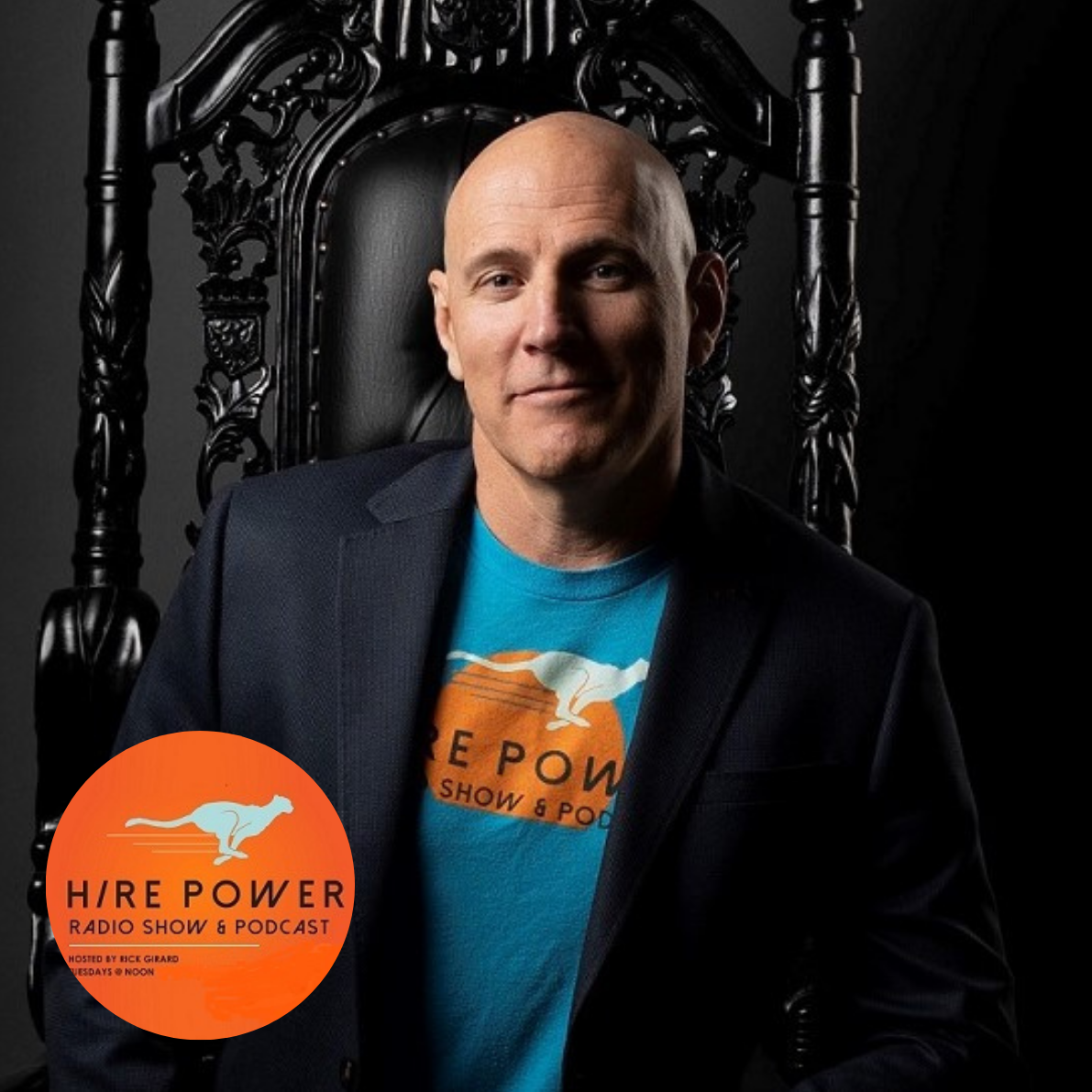
Welcome to the Hire Power Radio Show, where entrepreneurs and business leaders learn to hire with confidence and precision. Hosted by Rick Girard, this show is your go-to resource for avoiding costly hiring mistakes and securing the right talent to drive your company’s success. We dive deep into hiring challenges each week, featuring candid conversations with top-performing rebel entrepreneurs, disruptors, and industry experts. Join us every Tuesday at noon (PT) on LinkedIn Live for actionable insights, proven strategies, and the latest trends to give you the hiring edge. Subscribe now and join the movement to transform your hiring game. Do you have thoughts or questions? We’d love to hear from you!
Episodes
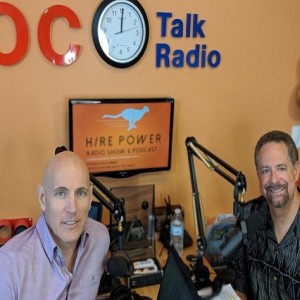
Thursday Aug 22, 2019
Thursday Aug 22, 2019
We are talking today about the importance of keeping your people informed about what hiring is taking place and allowing your people to become brand ambassadors!
The benefits of keeping your people informed are tremendous as employee referrals harness the highest ROI. Reduce time to hire (55%), Cost of Hire ($3k), improve the quality of hire by 88% and increase retention @45% (after two years).
This all starts with continually marketing internally first, then expanding outward!
Today’s Quote:
"Internal marketing is probably much more important than external marketing. That's even more true today than it's ever been."
- Tom Stewart
Guest Bio:
Angelo Ponzi is the Founder & President of The Ponzi Group. He is a marketing and branding strategist that works with small to middle-market companies as their fractional Chief Marketing Officer in defining market opportunities, developing competitive profiles, audience personas, brand realignment, and strategies, to strategic, integrated marketing plans that help businesses compete in an ever-changing marketplace.
He focuses on three strategic pillars for success: Insights, Brand, and Plan to develop effective and efficient programs for building enduring brands and sustainable business growth.
Angelo is also the host of the radio show/Podcast, Business Growth Café.
Show Highlights:
- Employment Marketing
- What is it? Why is it important
- How to Structure a solid marketing campaign
What is Employment Marketing?
- Promotion of the company’s mission, values, products/services to its own employees
Why is it important?
- Improve employee engagement
Problem
What are the challenges facing today
- In most companies, this is non-existant
- Marketing is left up to recruiting
- When it comes to marketing, companies focus externally and do not educate everyone internally.
- Internal marketing
- Creating brand ambassadors for hiring
- Everyone has a role in marketing, and need to get involved in what is happening. Get everyone to embrace what they are doing.
- Huge risk of alienating potential hires because they do not know how to market the company. Internal communication, internal operations, functionality
- Avoid potential issues
Who’s responsibility is it?
- C-suite & Marketing
- Recruiting
Rick’s Input:
- Internal referrals are your strongest source of talent
- Informed employees are continually on the lookout
- Required Talent Acquisition & Marketing collaboration
- Cultivate a referral program
- Brand messages reached 561% further when shared by employees vs the same messages shared via official brand social channels (Source: MSLGroup)
- Content shared by employees receives 8x more engagement than content shared by brand channels
Ingredients for good candidate Experience
- How to deploy an internal marketing program
- Set up a monthly meeting- internal chat or social platform to
- Get information to everyone
- Make the messaging visible as possible
- Internal email
- Exposure to marketing materials
- Educate employees on how the work they do fits into the overall business to build a better understanding of their contributions.
Steps for executing a plan - Process
- Conduct an internal survey to better understand the level of knowledge
- Develop an internal marketing plan, similar as you would for external marketing
- Empower an individual to be the internal marketing champion...not just an additional duty, but true responsibility with KPI’s
Rick’s two cents
- Align recruiting & marketing
- Cultivate a referral initiative
- Encourage promotion through social channels (Gamify)
Key Takeaways:
- Incorporate information about the company, markets and brand into the on boarding process
- Update employees at least once a quarter, if not monthly on any changes that can impact their jobs and/or give them the ability to talk about the company beyond their function
- Make sure employees are marketed to first, so they are aware of campaigns prior to the external marketing activities. This builds loyalty and inclusiveness among the staff.

Thursday Aug 15, 2019
Cracking the Bootstrapped Startup Hiring Code with Meetul Shah of DemandMatrix Inc.
Thursday Aug 15, 2019
Thursday Aug 15, 2019
Why is raising capital more celebrated than building a business that is actually profitable? It may be a smarter play to join an actual business rather than a "concept company".
A bootstrapped company should be more attractive to people but for some reason, it is not. Today we are out to prove that driving a good business does not require venture capital and You do not need VC money to attract and hire the right talent.
Today’s Quote:
"Bootstrapping is a way to do something about the problems you have without letting someone else give you permission to do them."
- Tom Preson-Werner, co-founder of Github
Guest Bio:
Meetul Shah CEO of DemandMatrix, Inc., is a tech entrepreneur, having successfully built 3 companies prior to starting Demand Matrix. His “entrepreneurial” vision and inspiration comes from his desire to create and bring products to the marketplace that can help solve problems he himself has faced in his career. The combination of his years as a successful entrepreneur combined with his tenure at Microsoft has given a strong shape to his business acumen and technical expertise.
Meetul has been featured in several major publications, like CIO, NYT, WSJ, Washington Post, Huffington Post, Venture Beat, and more.
If you were to ask him to introduce himself in less than 5 seconds, he’d probably just say he’s an idea machine, health freak, and wine lover! He is deeply passionate about Sales and Marketing Productivity given his time working for and selling to enterprise companies like Microsoft, DocuSign, Google, Cisco.
Show Highlights:
- Bootstraping! What is it?
- Challenges & benefits to hiring in this type of organization
- A Process to hire when you do not have money to burn
What is Bootstrapping?
- A bootstrap is a business launched by an entrepreneur with little or no outside cash or other support.
Why Bootstrap your company?
- When you take the capital, you take more risks in hiring. You make bad hires under the pressure of VC money.
- The pressure to hire outweighs common sense.
Challenges faced while hiring
- Viewed like you don't have money
- May not be able to afford people because salaries are supported by the business.
- Lowering standards because people are not biting.
- Desperation takes over and you hire whoever you can.
- Hiring is misunderstood in startups
- False perception- you have money, you hiring
- Early-stage it costs the company a lot when you make a bad hire!
Rick’s Input:
- VC money opens doors but it
- Attracting people who are brainwashed by funding yet you will probably won't get a dime when the company exits
Solutions (what you learned):
As an Entrepreneur, where to Start?
- Understanding yourself, who you are
- Supplement & compliment people to support core values.
- Hiring community understand and can divide and conquer
Structure your process to allow for successful hiring
- Hire a really good TA person
- Build a recruiting process.
- -find a recruiting process, glassdoor
- Don't be desperation and be non-bias and do not ignore the warning signs
- Badmouthing employer, blaming others, sharing things they should not share (internal information), bad culture, bad boss
Rick's Process:
- Determine what the business needs, set performance metrics
- Build interview questions to gauge with company value alignment
- Formalize an interview structure for “Purpose”
- predetermined questions
- Timed
- Behavioral-based interviewing (like Amazon)
- Communication/Feedback channel
Key Takeaways:
- 1. Know yourself, and the values you care about
- 2. Pay attention to the warning signs
- 3. Build a solid business foundation so you can use VC money "as a fuel in the fire" to align incentives/goals
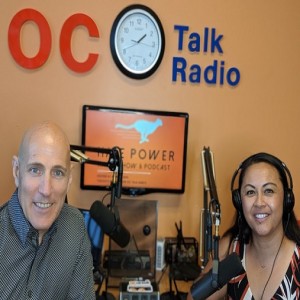
Friday Aug 09, 2019
Friday Aug 09, 2019
People are your company’s most valuable asset. Yet the interview process is riddled with actions to support otherwise.
Common Transactional Interview practices like pre-tests, hurdles, hoops, and ghosting do not attract people. In fact, they repel great people. The truth is, people will judge your company on how you make them feel! … not the offer you present to them.
Today’s Quote:
“It takes 20 years to build a reputation and five minutes to ruin it. If you think about that, you’ll do things differently.”
Guest Bio:
Marie Norman is the Director of Talent Acquisition for Adobe. She leads the Corporate Functions team which includes Global Marketing, Finance, Employee Experience, Legal and Corporate Strategy.
Marie brings diverse and innovative industry experience leading and building scalable talent acquisition teams and HR programs in the areas of Talent Attraction and Acquisition, Workforce Planning, Career Development and Coaching, Candidate Experience, Employment Branding, and Diversity, Inclusion & Belonging.
Her passion lies in motivating, coaching and building successful recruiting teams, employment branded story-telling and delivering a unique, memorable and delightful Candidate Experience to all. She is also an Adjunct Professor with the College of Business at San Jose State University.
Show Highlights:
- What is “Candidate Experience”
- Things that are downgrading your stock in the marketplace
- A Process to drive GREAT candidate experience
What is “candidate experience”?
- Candidate experience
- The attraction is more about relationship
Challenges facing today
- Managers can no longer play a passive role.
- Managers disengaged
- Don't realize they need to be involved
- The ability of the recruiter to continue to market the company for future roles
- People Fall through the cracks as the process evolves.
- When the candidate is not a top pick, things fall through the cracks and the relationship goes sour
- Companies Missing out on quality hires because of quickness.
- Quantifiable metrics
- Candidate experience scorecard
- Explain the position
- Time to follow up
- Overall experience
- Hiring manager alignment with the role
- *** Stats for success between hiring managers
- Alignment between the manager & recruiter
Rick’s Input:
- Transactional Mindset
- Out of sight, out of mind
- Give closure
- Talent double standard
- Miss-judge talent
How people feel determines how they perform. The purpose of every interview is to get to the truth of who a person is by gathering evidence to support making an accurate decision.
Ingredients for good candidate Experience
- How to give a good candidate experience
- Define who plays what part.
- Recruiter owns the first part
- hand off
- Hiring manager takes over
- Others- interview scheduler, hr admin, systems, career page, job ad itself - technology-driven, ATS systems - non-human elements
Process
- Easy submittal/application process
- Tracking system
- Communications set up immediately after application- within 24 hours
- Taking action
- Establishing a timeline.
- Final disposition
- Interview or rejection- communication
- Final communication- honor commitment to respond back
Rick’s two cents
- Communicate!
- Be approachable, break down barriers, hurdles
- Be creative: call people who the system screened out.
Key Takeaways:
- CONCEDE that the Candidate Experience is a crucial part of your recruiting strategy
- CREATE your plan and communicate/train participants on their roles
- CONSISTENCY - be sure to be consistent and repeat the process for every candidate every time!
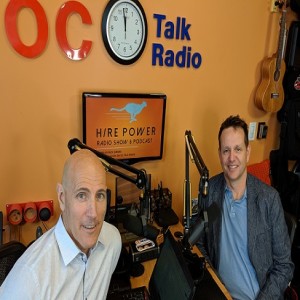
Wednesday Jul 31, 2019
Ryan Malone: Building a High Scale, High Performing Remote Company!
Wednesday Jul 31, 2019
Wednesday Jul 31, 2019
Today we are talking about building a high scale remote company. Try this on for size, a 75-person company without an office! The advantages are different than you might think yet you really must be mindful of who you are hiring.
A remote workforce is a time to talent advantage not a save money advantage
Today’s Quote:
“Most of us spend too much time on what is urgent and not enough time on what is important.” — Stephen Covey
Guest Bio:
Ryan Malone is the CEO of SmartBug Media, which he founded to give clients amazing results and employees a lifetime of memories. Before SmartBug, Ryan ran marketing at several venture-backed and public companies. Ryan enjoys the gym, live music, people watching, and playing terrible guitar. He lives in Orange County with his wife and two amazing daughters.
Show Highlights:
- Challenges & benefits of a remote organization
- The importance of cultural fit
- Interview structure for hiring remote employees
Challenges:
Why??
Building a business is hard enough. Why make it more difficult by building a remote business?
- Be part of the team and be part of the family
- Hire better and faster by being able to hire talent from around the country
- Only option to build the tribe
Talent Strategy:
- Recruit ahead- create a waiting list. Always interviewing.
Building a Marketing culture:
- People are bought in when they join
- Structure work culture
- Deep challenging relationships
- First people hired should be a marketing/pr person. Attract people who are already qualified to the process.
- Peer-based reference reviews prior to the interview. Inbound recruiting, skill survey
- Video submissions
Benefits of building a remote workforce:
- The talent pool is vast
- Work/ life integration-
- Flexibility
- The world will not end if you are not at your desk
Interview process:
- Inbound resume flow (into ATS)
- No headhunting
- ATS- kicks out instructions to make a video to submit
- Schedule an interview
- All video interviews, mix of behavioral interviewing
- One person focuses on skills, values, tools, cultural
- Look for Clean work environment, evidence of value, perseverance, curiosity
- Are you an additive to the culture?
Interview structure:
- A 30-minute call with everyone on the team
- Flexible work model
- Psychological permission be available for your customers/ team but the schedule
Key Takeaways:
- Hire marketing & pr first
- Use video as a screening tool
- Reference peer review early in the process
- Designate people to be experts in the interview process
- Always be interviewing
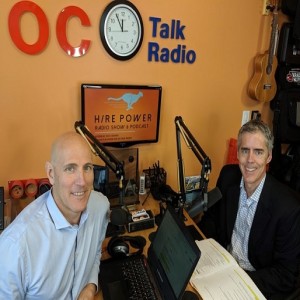
Thursday Jul 25, 2019
Martin Herrington: I'm Down With H1B... Yea, You Know Me!
Thursday Jul 25, 2019
Thursday Jul 25, 2019
Going old school with the title, don't judge!
STEM (science, technology, engineering & mathematics) hiring today is brutal as there are just not enough people to support the demand. Without bringing policy into the conversation we are going to tackle the challenge of how to hire around the limitations.
Today’s Quote:
"To maintain their own competitiveness, workers need to attain and stay current on the qualifications needed to advance in a constantly evolving economy." - Elaine Chao - Secretary of Transportation
Guest Bio:
An avid entrepreneur from University onward, Martin Herrington established a service industry business before graduation, partnered a real estate development company, and co-founded The Herrington Teddy Bear Company to move to the United States, creating a multinational sensation. As Chief Financial Officer and Managing General Partner, Martin was responsible for all aspects of the business including Sales, Production, HR, IT, and operations of the corporation before seeking additional challenges. Mr. Herrington holds a very distinguished record of service in non-profit organizations in Canada and the U.S. with his most recent focus growing the Youth Motivation Task Force of Orange County. An entrepreneurial graduate of the prestigious Haskayne School of Business at the University of Calgary with a Bachelor of Commerce, Martin also advanced his education credentials into the Series 7 and Series 66 US Securities Licenses and held the Wealth Advisory Associate role with Morgan Stanley before becoming a Financial Advisor as part of his creation strategies.
Martin is currently a founding partner and Vice-President with TEKCORUS Consulting, a Recruiting & RPO Agency based in Orange County, California specializing in recruiting high tech talent Recruitment Process Outsourcing Services. Martin has been a Toastmasters International member for many years, and speaks regularly at community events, business meetings, and consistently competes in Toastmasters International speaking contests.
Show Highlights:
- What an H1 is
- The benefits & challenges to hiring
- How to effectively hire someone under H1 status
Problem:
What is an H1?
- Long Term but not permanent work authorization / visa that is sponsored by employer.
Benefits of Hiring an H1
- Already has an h1b-
- wider pool of talent
- 3rd party intervention
- Better technical skills/expertise
- Better rate
Things to be Aware?
- Beware of agents
- Lying
- Different people showing up for different parts of the interview
- H1B is looking for a path to Green Card only
Quirks of Engineers - Knowing the individual to prepare for the interview
- Biggest challenge
- -Technically sound
- -asking basic questions
- -build a database of technical questions
How to sniff out the quirks, personality & culture fit
- Problem lies where
- Creating the right environment for an interview
- Knowing enough about your clients to be able to properly prepare candidates for interviews
Rick’s Input:
- Hire people who are already holding an H1b- Transfer
- Timing is S L O W - elimination of premium processing
Steps to Hire H1’s
First step - Go over resumes
- Watch for duplication - some resumes look too “familiar” or even identical!
- Look for excessively long resumes - ie. filled with same info. at each job experience
Second Step - initial phone call - screening for good communication skills - can be a challenge and if you cannot understand them, then your client or the team will likely not be able to either
- Go over each job experience by asking what they did and what technologies were used - making sure that it matches the resume, dates, etc.
- Listen for delays or background talking; candidate should know all details her/himself
- Confirm relocation details - do they have friends/family in New City; what is the likelihood that they will actually show up in New City? (ie. verify “Relocation Anywhere” and vet out tire kickers.
Third step - in-person or Skype interview
- Making sure the same person from phone call shows up for the in-person/Skype
- If by Skype - Watch for lip syncing, other people in the room speaking or signalling;
- Screening for communication,
Fourth step - get commitment for duration of contract;
- If necessary, contact Agency holding Visa to confirm
Rick’s two cents
- Communicate!
- No assumptions
Key Takeaways:
- Be diligent in your communications
- Find out Visa details; request copies of Visa/paperwork; allow extra time!
- Coach candidates through interview process
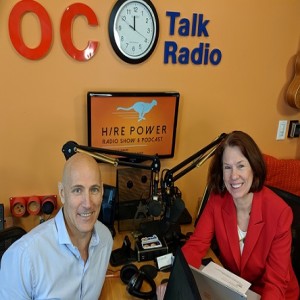
Friday Jul 19, 2019
Friday Jul 19, 2019
The usefulness or uselessness of AI & Employment branding in Recruiting.
Today’s Quote:
"This is what Steve Jobs understood: Brands are defined not by the best thing on the product but by the worst thing."
- Robert Scoble
Guest Bio:
MJ Shores is a Chief Marketing Strategist and technology trends analyst. With a rich and diverse professional background in public policy, business, and technology, she is sought out for her far-reaching, cross-industry and cultural insights. MJ has been a panelist and keynote speaker at industry and special interest events around the globe. She has been featured in Business Week, Financial Times, Wall Street Journal, MSNBC, China Post, and other media.
MJ developed her expertise through a career that spans working as a policy analyst at a think tank, serving in leadership roles at top global business schools (e.g., Wharton School of Business, UCLA, University of Moscow – Russia), and leading marketing efforts at technology firms (e.g., SaaS software, digital streaming or OTT), and others. She is involved in the local business community, where she is an acting Senior Strategic Advisor for Executive Next Practices (ENP).
Show Highlights:
- The role AI plays in employment branding & hiring
- What works & what doesn’t
- A road map of where & how to invest your time
Problem:
Challenges:
What is the relationship between AI & employment branding?
- Your brand is created by the experience people have with your brand. AI helps you determine the truth between your perspective and what the market thinks.
- How you brand your company and serve your prospects.
Where is it working?
- Routine functions *** open up time for HR to engage with People ***
- Extracting data
- Automated process for scheduling & auto response
- Monitoring your brand for good/bad feedback
Where does it now work?
- Tasks that require judgement
- Inferences between intent and keywords
- Still really in beta, not quite ready for primetime
Rick’s Input:
- Administrative tasks
- Resume screening- Both fail here
- Does not engage people
Solutions:
How to best use AI
Roadmap
- Spend $ on Training HR to identify and use technology.
- Rely on IT to identify and recommend tools. But IT does not understand Recruiting problems
- Start with a simple chatbot to automate scheduling and response to website querrys/candidate questions
- Social listening tools- candidate identification/sourcing
- Red flag/background check piece as a final step
- ethics & morality of this step
Rick’s two cents
- AI cannot replace human interaction!
- You still need to pick up the phone and find out the truth
- Do NOT rely on tools or resumes to filter people in our out!
Key Takeaways:
- Brands are No Longer Owned by Companies (in an era of skepticism of companies and traditional marketing, the voice of potential candidates and the public are central to your brand)
- AI Enhances the Candidate Experience & Talent Acquisition
- AI Will Enable HR to Become Human Again
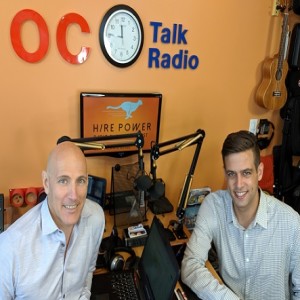
Thursday Jul 11, 2019
Ben Mones- Need to Fill VS. Cultural Alignment
Thursday Jul 11, 2019
Thursday Jul 11, 2019
The Battle between your Need to fill a role vs. hiring for cultural alignment.
More thought needs to go into “Who” you are going to hire than “What” you are going to hire. Meaning proven performers with transferable skills, not shiny objects.
Today’s Quote:
“Acquiring the right talent is the most important key to growth. Hiring was - and still is - the most important thing we do.”
- Marc Bennioff, Founder, Chairman and co-CEO of Salesforce
Guest Bio:
Ben Mones is the co-founder and CEO of Fama, an AI-based solution that identifies problematic behavior among potential hires and current employees by analyzing publicly available online information. He founded Fama in 2015 to address the needs of organizations everywhere that are grappling with the challenges of protecting their workplace culture and preventing harassment.
Prior to Fama, Ben held a number of executive roles at a variety of startups in the Bay Area, including Acceleprise, an independent accelerator focused on enterprise technology, where he served as Entreprenuer in Residence as well as Lanetix, a leading provider of cloud-based customer relationship management platforms as director, revenue operations. He also spent two years at content analytics and insights company Chartbeat. Ben has been tapped as a guest lecturer at MIT Sloan School of Management, UCLA Anderson School of Management and USC Marshall School of Business, and has also been featured in CNBC, Fast Company, Los Angeles Times, TechCrunch and the Wall Street Journal. He holds a Bachelor of Arts from Vanderbilt University and is based in Venice, California.
Show Highlights:
- Why & How culture shapes your business
- Ego over common sense- Hiring rock stars
- Lessons learned and a structure to follow
Problem:
Why is it important to invest in culture?
- Shaping the culture of your business.
- Human behavior drives business outcomes.
- The virtue of power, ability to destroy or drive excellence
- When you need a function desperately filled, how do you balance your need to fill with the cultural value
- People want to align with products and services that they are passionate about
Why does Ego make decisions over common sense?
Anybody with a legitimate amount of responsibility makes a difference.
Rockstar engineers, leaders, need to fit into the organization, not the other way around
*** first-time founders Story:
- They decided to bring in some rockstars. Someone to groom.
- Didn't really fit the culture, demographics, hustle & grit. They went for the big dog name!
- Knew almost immediately and he took a position of superiority
- Hostile, no empathy… what they thought was not the reality
Lesson Learned
- Hired but got rid of that person quickly.
Rick’s Input:
- Cultural alignment/values alignment increase productivity
- One wrong egg
- Hire Performers, not “Rockstars”
- Rockstars
Solutions:
What road map should leaders follow?
- Get to know yourselves first. What is important to your business to ensure your success, mission & values to drive success. Team-based decision
- Structured interview process. Strong candidate experience, all voices/perspectives are heard in the decision process… treat each person like a new hire from the very moment they get in contact with you
- If you think you have talked to enough people, talk to a few more.
- Confirmation bias
- Be swift. Hire slow, intervene quickly! A closer look on the first 60 days. Course correct early on! With more transparency
- Driving synergy is more important than putting a rockstar in a seat
Rick’s Framework
- Treat each Person as if they are your only person
- mindset eliminates bias
Key Takeaways:
- Human behavior drives business outcomes
- Before identifying the talent that can help drive your business forward, critical to dig-in and understand the values and culture drivers within your business.
- Intervening and course correcting is an easier option than you might think...terminating a person is a last resort.
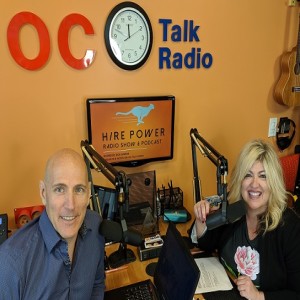
Friday Jul 05, 2019
Lorraine Ladd: Learning Your ABC's. Always Be reCruiting!
Friday Jul 05, 2019
Friday Jul 05, 2019
That's right people, today we are talking about our ABC’s!
The reality of the talent market. Creativity and Contact are the keys to winning talent. We are going to clue you in on where the gold nuggets are and why you are missing out on great people.
Today’s Quote:
"Great vision without great people is irrelevant." - Jim Collins - Author: Good to Great, Built to Last
Guest Bio:
Lorraine Ladd is the Associate Director of Talent Acquisition for alliantgroup.
She is an experienced sales and Talent Acquisition executive with a demonstrated history of working in the staffing and recruiting industry. Strong professional skilled in Customer Acquisition, Sales, Executive Search, Customer Relationship and Executive Coaching. Lorraine started her career while in college in radio and was a successful radio morning show personality before deciding to go into the world of staffing and recruiting.
Show Highlights:
- Why you should always be recruiting
- The Truth about responding to your job postings
- Where to find great people now!
Problem:
Bold Statement: Recruiting is easier today than it ever has been!
Why is it important to be continuously recruiting?
Creative ways to recruit talent
- Not enough talent - Why?
- Low unemployment, not tapping into the right pools
- Active candidates
The Truth: where you are missing people … about responding to Ads
- There really is enough talent, people are just not tapping into it
- A lot of people that are out of work 50-65 can't really find a job as a white male.
- Perception: Less flexible , set in their ways
Rick’s Input:
- Requirements are FLEXIBLE
- Look for reasons to screen people IN
- My experiment…. Sent out resumes
Solutions:
Where to find good people now?
- Unexpected places to recruit talent
- Retail, cold calling, conferences
- Using every tactic you can
- Pick off the 50-65 talent pool
Rick’s Answer
- You are missing the people closest to you
- Applicants, former applicants, former employees
- Target Passive Talent
- Requires different positioning
- All about “what’s in it for them”
Key Takeaways:
- Always be Recruiting
- Hire people, not roles
- Network
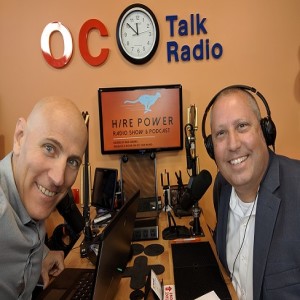
Thursday Jun 27, 2019
Thursday Jun 27, 2019
Engagement!
Well, not the type of engagement you might be thinking of.
Engagement in the business sense. Employee engagement is the one critical element that leads to the success of your business! Which I believe starts from the first point of contact with your organization… yes before someone is hired!
Today’s Quote:
“Not what you say, not what you do but how you make people feel.” - Maya Angelou
Guest Bio:
Steve Higginbotham is the Branch Manager of Volt Workforce Solutions. As an executive business partner and inclusive leader, Steve brings two decades’ of experience leading organizational transformations with leading companies. Changing the way Staffing Companies engage with their customers is vital. Having a deep connection with your business and an inclusive approach will continue to add value through a Total Talent Management partnership. Steve has expertise in Technical Recruiting, Business Development, Technology Consulting and Human Capital Solutions. He continues to deliver immense value to companies and business leaders through his strategic partnerships. Steve believes in a customer service approach for business success.
Steve has experience leading multiple types of organizations from Fortune 100, mid-market, private equity, & VC backed start-ups. In addition, Steve has developed 15 different divisions within eight different businesses while managing large business units & increasing enterprise accounts. His track record includes leading, coaching, mentoring and developing people into highly successful business leaders.
Steve has spent his career aligning business professionals with career opportunities. The value that he brings to companies identify with their strengths and opportunities for growth. Steve's experience coaching individuals helps improve communication. He has also conducted numerous presentations to board members and C-Level professionals with highly respected clients and industry associations.
A people oriented leader who drives business collaborative to maximize team performance while mentoring & coaching individuals through aligned approaches to achieve desired results.
Show Highlights:
- What Engagement is, what it isn’t
- Why engagement is critical today
- How to engage people to create emotional attachment!
What is engagement and why is it important? Engagement
- How you communicate with your company
Hiring managers - I want to hire the best talent, retain top talent
- What happens in the middle from what you want vs what you are getting
The company gave 3 hours of training, no orientation, on the job training.
- Employees responsibility - Who owns engagement??
Problem
3 sides of the engagement - Who’s responsibility is it these days
- If a person is not engaged correctly, they are going to bounce quickly… first 30 days.
- The company needs to train leaders to be better leaders
- The dual partnership between the company's & managers
People leave quickly or they stay and are just there because of the paycheck
Belief in mission, vision values.
Outlining issues that you cannot control
- Employee: losing engagement with the job… nothing more that is being contributed
Rick’s Thoughts
- Engagement starts with your job posting, email or phone call
- Critical in attraction & retention
- When you care, you win
Human Contact is the key
- 1:75 people call back.
- There has to be a personal approach.
Steps to maximize engagement
- Sources are not recruiters…
- Everyone with at least relevant experience NEED to be called
- train recruiters on what needs to be asked
- Discuss career worth
- Poor career planning. No mentoring, support or growth
Once they start:
- Not scaling back on your onboarding process
- Social media posts are not onboarding
- Clearly, have a process
Train your recruiters
- What information to gather
- The importance of a conversation
- Reward finding gold nuggets!
- Create a hiring bonus for people who were passed over because of a resume but are actually good
Pick up the phone and call people!
Key Takeaways:
- Differentiate yourself from the standard hiring process
- Create a structured and standardized interview process
- Train your employees to be Talent minded
Remember in engagement – how you make the candidate feel is more important – please be genuine in your approach, efforts and ensure timely and responsive feedback – always
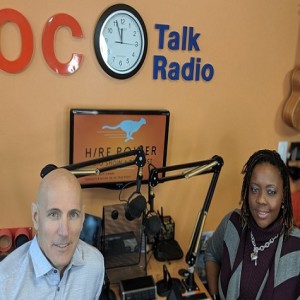
Thursday Jun 20, 2019
Dr Deena Brown: The Hiring Power of Relationship Capital! Or You’ve Been Cat-fished
Thursday Jun 20, 2019
Thursday Jun 20, 2019
Offers do not get turned down because of the MONEY… They are turned down because you failed to Understand who the person is and then demonstrate a mutual alignment of career & personal goals to your organization.
The Truth is People turn you down because of the lack of care!
Today’s Quote:
"Truth is, I'll never know all there is to know about you just as you will never know all there is to know about me. Humans are by nature too complicated to be understood fully. So, we can choose either to approach our fellow human beings with suspicion or to approach them with an open mind, a dash of optimism and a great deal of candor." - Tom Hanks
Guest Bio:
Dr. Deena C. Brown is the founder and CEO of DC Brown International, a leadership and growth company created to pioneer innovative strategies that transform organizations into culturally diverse ecosystems.
Dr. Brown’s trademark C3 Blueprint for Success provides a strategic roadmap for organizational leaders to communicate and connect across a multi-generational workforce. Dr. Brown’s body of work includes identifying and remediating leadership gaps that are barriers to innovation and growth.
After identifying a significant deficit of women in key leadership roles, Dr. Brown founded The Leadhershift Movement. The Leadhershift Movement is designed to help women shift the way they think about themselves as women and how they develop and respond as leaders. The Leadhershift Movement provides a safe-space for professional women to get clear about their Why, confident about the What, and consistent about the How.
Show Highlights:
- Our approach
- How we humanize the process to gain greater engagement
- Process to Engage
Approach to talent
What is the problem?
- Ignoring the root of hiring. The human factor, the relationship capital
- Mindset
- Ignore the obvious
- Organizational view- transaction
- We need to fill the hole
- Disconnect on the level of importance for the person they are hiring.
- Simple things are ignored…
- Dealing with a new population of employees that are looking for more than just a paycheck
Why Offers are really Accepted or Turned Down
- We lie
- Arrogance & Ignorance
Rick’s Input
Our approach is Selfish
- We have become conditioned to believe that the company is the PRIZE
- Not the case in this market
- Positioning is a one size fits all …. Centered around perks & benefits
- Listen to understand, not to respond
Solutions
- Being aware
- transparent
What have we done about this?
- Training
- Using the data to support the discussion
- Awareness
- Brought to the attention & proper training
- Learning to remove ignorance
- Identify the gaps (pain)
- Education shift in mindset
The 3 C’s
- Clarity in Vision, Mission, and Organizational Values that paint a clear picture for potential hires.
- Consciousness about what today's workforce values such as authenticity and relatability which is more influential than a paycheck.
- Consistency in regards to expectations and responsibilities of your workforce.
Rick’s Contribution
- Engagement starts before the hire is made
- Too much focus on the money & perks
- What a person desires is far more powerful
Key Takeaways:
- Care about the Human relationship
- Having clear values … are you who you say you are
- Provide growth opportunities to augment or improve a person’s life
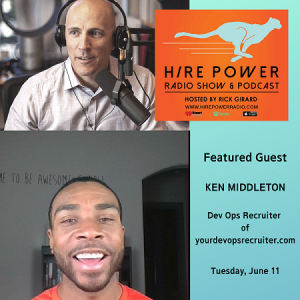
Thursday Jun 13, 2019
Ken Middleton: Thank You for Ghosting Me During Your Interview Process
Thursday Jun 13, 2019
Thursday Jun 13, 2019
Ghosting has come full circle now that it is a talent-driven market! There is no excuse for ghosting someone on either end of the hiring spectrum. It is a vicious circle that just breeds ill will.
Frankly, as a recruiter, company ghosting helps us to lure your best people out of your company.
Why do companies engage in such behavior? We are going to figure that out today!
Today’s Quote:
Your brand is your public identity, what you're trusted for. And for your brand to endure, it has to be tested, redefined, managed and expanded as markets evolve. Brands either learn or disappear.
Lisa Gansky
- She was the co-founder and CEO of Global Network Navigator, the first commercial website, which was acquired by America Online
Our guest today: Ken Middleton, DevOps Recruiter of yourdevopsrecruiter.com
Ken M. Middleton spent 10 years working for the largest IT staffing company in the world before deciding it was time to bet on himself. He started YOUR DevOps Recruiter to focus on connecting the best DevOps candidates to the best DevOps companies while evangelizing DevOps to the masses.
One way he accomplishes this is through his YouTube channel, The Dhub Repository, in which he posts weekly DevOps career tips, rants on what bugs him about the recruiting industry, and interviews DevOps SME's on different DevOps topic, in a segment known as DevOps Defined.
I have heard Ken rant about ghosting which is what makes him a perfect guest for today’s show!
Today we are going to cover
- What Causes Ghosting?
- How to Stop Ghosting
What is the problem?
- Clients ghosting candidates.
- No feedback or super slow feedback after long extended amounts of time with no updates along the way.
Why might companies’ ghost?
- Litigation fears
- Running too fast to pay attention
- Just lazy, inconsiderate or Arrogant …
What are the causes?
- HR representatives being overworked with numerous positions.
- Not considering quick and timely feedback is important to the candidate experience.
- Not have a clean process in place to follow up with ALL candidates, not just the ones they want to hire.
- Not giving a sh*t about candidates who they don't want to hire and just letting it fall by the wayside b/c of a feeling of superiority and snootiness towards candidates that apply to them. (i.e. they came to us for a job, right?)
Rick’s Two Cents
- Communication
- Ghosting occurs on the company side when companies are unsure about a person.
- Interviewers do not know the right questions to ask, how to dig so they did not gather enough evidence to make a decision.
- The key indicator of a bad hiring process.
- No clear structure on the information that needs to be extracted
- Without direction, people fall back on what they know.
Side Note: Your Bad Glassdoor reviews are a recruiter's best friend… How to treat people interviewing at your company
Solutions
- Stop having your HR representative work on so many positions at one time - Prioritize what's important...not what you MIGHT need down the road or later.
- Create an automated process to respond to applicants - There are CRM's that have this functionality where you can send multiple emails to candidates. Avionte, what I use, is able to do this.
- Create a better follow up process for quick feedback - Schedule the feedback meeting within 24 hours of the interview. Don't let it happen by chance. It needs to be planned and everyone has to understand the importance of it.
- Create standards for feedback to all candidates and an update process/rhythm - Just because you don't have an answer doesn't mean you shouldn't communicate with your candidates. At least once a week is a good rhythm that will keep them engaged and protect your company's brand to not be a "ghoster."
- Give a sh*t - Not Just because it's the right thing to do but because it protects/helps your company's brand and ability to recruit in the future. Understand that feedback is part of the candidate experience (some would argue the most important since primacy and recency (first and last) is often what people remember about most experiences)
Rick’s Process to eliminate ghosting
- Eliminate the transactional mentality
- Protect your company brand
- Understand the Reality of the Talent Market
- Breed the right culture
- Communication, gather feedback quickly *** Realtime Feedback!!
- Process for quick decision making & feedback
- Lead person monitoring the interview (founder, HR, Recruiter, Admin)
- Build in Knock-Out questions
- Debrief each interviewer as they exit the interview. (Max 10 minutes) - add that to the managers calendar
- Evidence to support a “No”
- If they dont pass the knockout, let them go
Key Takeaways
- Feedback (good or bad) is super important to candidates and if you want to attract the best talent and protect your company brand you need to get great at delivering this in a timely manner.
- This doesn't happen unless you make it a priority as part of your candidate experience process, and if you don't think you have a process, you actually do and I'm pretty sure it's BAD.
- We all need to CARE more. Looking for a job is sometimes one of the hardest and most difficult times in someone's life, and we need to treat people with that in mind in relations to our interactions, as opposed to just focusing on fill another job for your company.

Thursday Jun 06, 2019
Anderee Berengian: Hiring Good People is Hard....Not if You Hire for Culture First
Thursday Jun 06, 2019
Thursday Jun 06, 2019
Here’s a shocker for you guys today… Hiring Good People is Hard! Or is it? Maybe we just make it hard on ourselves because we make compromises based on need.
Today we are going to take you on the hiring journey of one startup who have managed to beat the odds to build amazing teams.
Today’s Quote:
“The pessimist sees difficulty in every opportunity. The optimist sees the opportunity in every difficulty.” - Winston Churchill
Guest Bio:
Anderee Berengian is Co-Founder & CEO at Cie Digital Labs, an interactive development firm and Managing Partner at RezVen Partners.
With more than 20 years of experience steering corporate and product strategy, Anderee is an accomplished entrepreneur, technologist, and investor passionate about driving progress through digital innovation. At Cie, Berengian is responsible for building a world-class execution-focused team and growing Cie’s digital transformation ideas into sustainable, profitable companies.
Show highlights:
- What really makes hiring hard
- How to make hiring easier
Problem:
“Organism rejects the thing that doesn't belong”
- So why do we hire people that are wrong for our companies?
- Used to screen - look at Skills first
- Are we truly interviewing and hiring for culture?
- *** Biggest pain point is time- Interview 10-12 to get a hire.
- Streamlining the process to save time
*The top dictates the culture
- Check for cultural & skills fit
- Make people comfortable .. Casual setting, get a much better sense of who they are and how they will fit.
- *** Bring back for social interaction
- Foster a lot of team-based interactions
- -heavy screening for culture
- Promoting people who propagate the way they think and execute
Rick’s Input
- Difference between Culture & Perks
- Culture is what happens when no one is looking- how people interact, treat others
- The icky stuff
Solutions:
What needs to happen in the interview process?
- The shift in recruiting to tell the story very clearly.
- The person can self select very quickly if they want to join.
- A structured process, lead drives the process
- The interview process for onsite
- Technical- screened, test-
- Artistic-
- Recruiting team-
- Bring in to interact with people.
- Meet with people in their department, adjacent teams,
- Offer stage-
- Had one candidate they really wanted, lost to another offer
Rick’s Input:
- A deeper level of understanding/vetting on the front end… ie: phone screen, recruiting call, introduction
- Target no more than 3-5 people to bring onsite for an interview. If #1 is a fit, hire! no need to comparison shop
Key Takeaways
- Build right so the organism rejects what doesn’t belong. Look for the cultural fit first
- Take your time hiring. Hire slow and then if you need to make staffing changes, do it quickly.
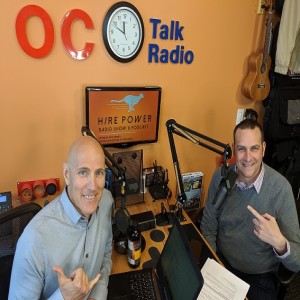
Thursday May 30, 2019
Thursday May 30, 2019
Attention comparison shoppers... waiting to see a “few more people” to compare before deciding to hire? Bad Idea, Time kills hires!
Riddling your interviews with randomly placed hurdles is just madness. Making the interview process challenging is essential but there is a correct order to the journey you create. Each step in your interviewing process must be intentional.
Today we are going to help you bring order to your interview process.
Today’s Quote:
"Comparison is a thug that robs your joy. But it's even more than that - Comparison makes you a thug who beats down somebody - or your soul."
- Ann Voskamp
Guest Bio:
With the resurgence of Big Data and AI, Shane Bernstein realized the tools needed to scale the effective outreach approach were finally available! His C-level customers were continuously frustrated with no viable and consistent solution, and unable to build the teams they needed in order to have the global impact each of their businesses required. So Shane founded Rolebot.
Utilizing the power of AI, he and his team have developed software enabling companies and staffing firms to reach their goals and measure ROI. As a result, Rolebot eliminates the way in which we traditionally pre-qualify talent, from days/weeks to seconds, and increases recruitment output and engagement results by 10x.
Show Highlights:
- What is making it impossible to hire Great people
- Over Interviewing- How much is too much
- Efficient Solution to come to a decision quickly
Problem:
Over interviewing is a direct result of Not having a solid hiring Structure
- Clarity of Intention
- Clarity of Values, Cultural & Skills Alignment
- Not Knowing how to ask the RIGHT Questions to gather clear evidence to support a decision
Where are the Obstacles?
Over interviewing makes it harder to get the hire.
- Timing (time kills placements)
- Too much time kills interest.
- Time allows time for competitors to steal… not an if, but a when
- Feedback channel
HR prescreens
- HR assesses for culture fit.
- The Team should screen for culture, not HR
- Take home assignments- Give BEFORE you get… mentality
- Pre-screen is a big waste of time.
What is Over Interviewing?
Reality vs. Perception
- Comparison Shopping
- Hurdles - Mindset Issue (You are not the only pretty girl in the bar)
- Demonstrates weak leadership
- Feedback channel. Is slow when the process is slow
****people hire on gut feeling…
Rick’s Input
- Why? Company does NOT have a strong interview structure
- Treat each person as though they are your Only option!
Solutions
The Set Up
- Recruiter - recruit & ask questions
- Is the recruiter/hiring manager bringing value?
- Manipulate time to gain accepted offers
- Someone needs to own the process
Interview Process
Two step process
Phone interview - lead, manager (not recruiter or HR)
- Credentials
- Technical skills assessment
- Skills-based conversation run by a team member
Onsite
- Get it done in 1 day… do not bring them back
- Has to be vesting on both sides.
- Have a hiring team & a process in play
- Put the decision makers and the people who will have to work closely with them
- Make sure the people can sell the position & the company
- Be able to sell: Why should I take this role?
Rick’s Input
- What’s in it for me???
- Phone Interview Establish -Why, Cultural Alignment, Impact
- Point person (CEO, Founder, Recruiter (not a farmer)
- Onsite
- Timed
- Structured (3-5 person Interview team)
- Challenging
- Knock Out Questions- aligned with Core Values
- A decision in 24 hours!
Key Takeaways:
- Assess the current process, does it align with the current marketplace, what ROI does each component bring, what is % of rejected offers, etc…
- Figure out what must stay, what can be omitted, or moved around and integrated
- The goal is to strike the right balance for your organization
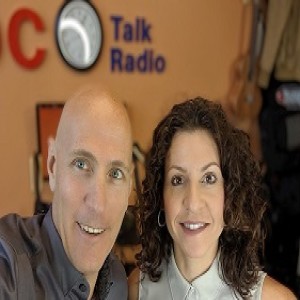
Thursday May 23, 2019
Marinela Gombosev: An Alternate Route for a Startup to Hire Salespeople
Thursday May 23, 2019
Thursday May 23, 2019
Alternative ways to hire salespeople when your company is getting started. Sales are the lifeblood of a company but what do you do when you need to grow revenue but have a limited budget? You get creative. Today we are talking about an interesting alternative to driving sales in the form of Independent sales reps.
Today’s Quote:
"Pretend that every single person you meet has a sign around his or her neck that says, 'Make me feel important.' Not only will you succeed in sales, you will succeed in life." - Mary Kay Ash
Guest Bio:
Marinela Gombosev is the President & COO of Evoke Neuroscience, a commercial-stage diagnostic company focusing on early detection of Alzheimer’s and other dementias with a vision of ultimately eradicating dementia. Marinela is a roll up the sleeves leader who strives to work across all levels of the organization, lead from a place of authenticity, and effectively represent the company to its clients, partners and investors.
Over 50,000 patients have been assessed using Evoke’s technology and under Marinela’s leadership, the company has twice been ranked in the Inc. 500|5000 fastest-growing private companies.
Show Highlights:
- The good bad & ugly of hiring independent sales reps
- How to hire them in the most efficient manner
Problem:
Why hire Independent sales reps?
Independent manufactures reps?
- Upside
- No money to spend, a great way to get growth
- Don't pay anything until they close a deal
- Fast
- Rephuner.net
- Downside
- Control or visibility
- Way to monitor, don't want to be managed
- Misunderstand the product, regulations, Get burned a lot
- Can put you in a legal liability
- Misrepresentation of contacts & skills
Solutions
How do you hire them?
- Dirty secret: You are buying their relationships
- Hiring because they are trained. Many are pretty bad. Where she has been successful are the ones with relationships. Once they sell their relationships.
- Similar types of products.
- Who are your call points? Personal network? Other reps that work with you?
- Place an ad and make sure profile is written for reps
- Who are you selling to, what are you selling, how much $ am I going to make
Schedule call
- Evaluate call points
- Level of interest
- Product Understanding
- Amount of time they can invest
- How many other clients they have
- Where am I on the priority scale
Hire
- Sign NDA
- Disclose comp plan
- Sales rep agreement
Comprehensive Training Plan
- On boarding program & test
- Access to all the training materials
Rules
- No exclusive territories
- Lead registration program / lead protection
- Demo product
- Short term play once the network is exhausted they usually burn out
- Internal expertise helps to close leads
- *One to Two phone call hire
- 3-4 hour time investment per person
- Product margins to support it
- A revolving door of recruiting. Have to constantly recruit
- Need 50 because most of them are not selling
- 80/20 rule
- *** Prepare for a love/hate relationship
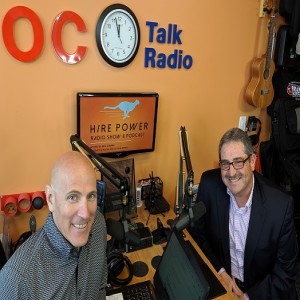
Thursday May 16, 2019
Angel Iscovich: Routine Hiring is Great for Business!
Thursday May 16, 2019
Thursday May 16, 2019
We are hard-wired to follow a routine. This is why we perform certain tasks better throughout various times of the day. So designing your hiring routine to follow a person's optimal performance is crucial making the right hiring decision.
Understanding and evolving your personal and company routines are vital for attracting talent!
Today’s Quote:
"Celebrate life in all its glory - challenge yourself to let the routine sing, and the new dance." - Maximillian Degenerez
Guest Bio:
Conventional wisdom suggests the best way to navigate our noisy new world is to accept change: Open up to novelty. Go with the flow. Embrace the relentless pelting of content minute by minute. Dr. I. is here to say this is not the best way to journey through our lives — and in fact, may go against our very nature.
Dr. Angel Iscovich is the President of Inflexion, LLC and the Author of his new book: Routineology: the Art and Science of Routine. Find out more on his web page www.angeliscovich.com and Routineology for Instagram and Doctor I on Twitter.
The crux of Dr. I’s book is that humans not only require structure, they thrive in it. From the womb to the tomb, we create and recreate numerous dynamic “Time Bubbles,” offering us meaning, fulfillment, and purpose. He is excited to show how implementing routine in one's life can lead to better, health, joy, and fulfillment.
Show highlights:
- The science of a routine
- Benefits and negatives of a routine
- Build a strong routine into your hiring practice
Problem:
What is a routine and why does this matter?
The science of a routine
- We are wired for regularity
- Change is not necessarily good for us.
- Routine is boring because you are doing the wrong things, wrong habits
Leadership
- Importance to develop regularity, routine & structure
- Routines become rituals and rituals drive the culture of the company
- Doing things regularly enhances performance
Solutions:
Personal Routine
- Make a routine of spending 45 minutes alone - reflecting
- Turn off the data, social media
- Especially if you are being creative or making a big decision
- Wired to regularity: being smart about what we do and when we do it
- Knowing your Circadian rhythm
- Technology is not able to replace Humanity, “Techmanity”, or how we are wired, is important in hiring talented people.
- Company rituals need to be re-engineered to meet the needs of the people
Interview & work productivity routine
- Task-related activity 8-10 am
- People Engagement 10-12pm (people are most social)
- Postprandial dip after lunch recovery time (task-related)
- Cortisol levels drop by 3 pm (Starbucks coffee, tea time) - Innovation time
- Least productive time - the body needs an energy boost
- Good time to meditate
- NOT a good time to interview!
- Great time for Innovation though... brainstorming
- Another hour of productivity 4-6pm
- Send people home at 3 pm and log on for another hour of work at 7 pm
- *Optimal interview time between 10-3
Rick’s Input
- Hiring routine with the purpose of being impressive
- Interview people when they are most
Key Takeaways:
- We are wired for Regularity and our unique Routines in themselves give us meaning and purpose.
- Our Circadian Rhythm provides us with when we are at our best and when we can be most productive.
- We need leaders to make for stable environments for our team members that create Routines, Rituals, and our Company Culture.

Thursday May 09, 2019
Lee Caraher: Boomerang Hires Knock Out All Others!
Thursday May 09, 2019
Thursday May 09, 2019
Is it a good or bad idea to hire former employees back? In today's job market, people may exit a company to experience life at a startup, change industry, or even go back to school. So why would you have a no-return policy?
Jack Dorsey left Twitter to found Square between his two stints as CEO of Twitter. And Steve Jobs was a boomerang hire. We need to start treating departing employees as future brand ambassadors, potential customers, hiring references, and even boomerang — returning employees.
Today’s Quote:
"There is nothing like returning to a place that remains unchanged to find the ways in which you yourself have altered."
- Nelson Mandela
Guest Bio:
Lee McEnany Caraher is the founder and CEO of Double Forte PR & Digital Marketing, a 15-year-old national agency that works with beloved and up- and-coming consumer,technology, and wine brands. An acclaimed communication strategist, Lee is known for her practical solutions to big problems. Lee has a reputation for building cohesive, high- producing teams who get a lot done well and have fun at the same time. She is a straight talker who doesn't hold too many punches, although she does her best to be pleasant about it. Her big laugh and sense of humor have gotten her out of a lot of trouble.
The author of Millennials & Management: The Essential Guide to Making it Work at Work, Lee based the book on her experience with epically failing and then succeeding at retaining Millennials in her business. Her second book, The Boomerang Principle:Inspiring Lifetime Loyalty From Employees, published in 2017, is a pragmatic and actionable guide to creating high-performing work cultures ready for the future (available on Amazon).
Lee is a popular guest expert on leadership, intergenerational workplaces, public relations, crisis communications, social media and integrated marketing. She splits her time between San Francisco and New York City, and puts her medieval history degree to work every day.
Show Highlights:
- What a boomerang hire is
- Why you should absolutely integrate this practice into your talent acquisition process
- How to acquire boomerang hires
Problem:
Why would you hire someone again?
- If they come back to you it means they liked it there
- Not going to hire them for the same job
- They will be even more valuable to your company the second time bring something of value to your company
- Take less time for them to come up to speed 2-4 months (up to 12 months for new hires)
- Boomerangs are the highest performing hires at google
- More than 45% of millennials say they would absolutely return to a former employer
What would make someone eligible for rehire?
- Anyone who leaves in good standing
- Building loyalty beyond employment
Rick’s Input
- Already familiar with the culture
- Boomerang trend pioneered by millennials
- Rehires are less risky-
- would not choose over someone outstanding (rockstar)
- The decision should be made based on the exit interview
Solutions:
Mindset:
Understanding why people left
- Take a long view
When they leave
- Be happy for them
- Never counter
- Ask “how can I help you?”
Steps to create a re-hire program:
Create a program or environment - keep in touch with the people who left on their own volition
- Set up an Alumni program (company run) facebook group (not a Linkedin group)
- Content engagement
Keep the universe up to speed with what you are doing….media relations
- Birthday card
- Share wins
Interaction… stay close to the universe of potential
Hiring- share new roles with the alumni group letting them know that hey can came back.
How is Onboarding different?
Rick’s Input:
- Why did people leave in the first place
- One survey found 70% of employees say job related training and development opportunities — or lack thereof — impacted their decision to stay at their job.
- Growth & training
- Leadership does not have their back
- Trust - transparency, communication, investment (not perks)
- Consider re-hiring people who left due to a poor leader (toxic executive)
Key Takeaways
- If we aren’t open to hiring former employees you are SHRINKING your potential talent pool of great employees
- Everyone who leaves you can hurt you or help you. Do everything you can to let them help you! Help you find new employees, help you spread the word, help you find good partners.
- Take the long view – your business will be BETTER all the way around if your employees are loyal to you – NOT because you pay them but because they WANT to. And then every time someone leaves the company you are actually GROWING your footprint not shrinking it.

Wednesday May 01, 2019
Mitch Balzer: Comparison Shopping has No Place in Your Hiring Process!
Wednesday May 01, 2019
Wednesday May 01, 2019
Not making a decision quickly is one of the biggest mistakes a hiring manager makes. Often the fear of making the wrong hiring decision leaves people in limbo and ultimately turns them off from working at your company.…....Wanting to see a “comparison candidate” is a clear indicator of a broken interview process!
Today’s Quote:
"Passion provides purpose, but data drives decisions." - Andy Dunn - CEO of Bonobos
Guest Bio:
Mitch Balzer is the Co-Founder & Executive Vice President of Agema Technology Inc, an Orange County based Professional Services focusing on enterprise business systems like Oracle and SAP, Virtualization, and IT Security. Since starting Agema in 2012 he has overseen many of the Fortune 500 clients in the Information Technology, Government, Insurance, Finance, Utilities and Oil & Gas industries ultimately delivering a 77th ranking on the Inc. 500. Prior to Agema, Mitch started his career with a national, publicly-traded technical services firm rising quickly through the ranks. In 2002 he helped start another staffing company driving revenue and delivering a top 100 Inc. 500 ranking before departing to cofound Agema. Mitch Balzer and Agema also hold a Secret Clearance.
Show Highlights:
- The Comparison Syndrome
- Why this is detrimental to your business
- How to structure your process to avoid this costly mistake
Problem:
Why is this important? FEAR
- Fear of a bad hire for a mid-level manager.
- Want to see another resume, comparison candidate
- **Making a decision on the hire - biggest mistake a hiring manager makes!
- Setting expectations- pre-commitment, you trial close a candidate (at least you should be) when you have them interview by asking will you take this job if offered? You need to do the same with the hiring managers, if a great candidate that fits X, Y, and Z comes in tomorrow can you offer them the job right away?
- Ham & Egg - one good resume with one the recruiter knows isn’t a great fit
- Resources
Why this is Bad for your business?
- Ramifications of waiting – time kills all hires
- Outcome - sent lesser people
- Prioritization of the roles – your openings will be a much lower priority whether its an external or internal recruiter
Rick’s Input
- Stalling the process kills Momentum, Interest & Engagement
- Result of poor planning
- Defining “WHO” is needed
- The reason you are unsure is due to the poor interview techniques/process
- Gathering the right EVIDENCE in the interview
Solutions:
How to Structure for a decision
- Who has the ultimate authority to make the decision?
- Disconnect in communication and should be involved in the process
- Clearly defined process. Get commitment to timelines on resume review, interview scheduling/process, and feedback and final decisions on a candidate.
- Feedback channel (ghosting)
- Pulling the trigger! Close, Close, Close
Everyone wants to go to heaven but nobody wants to die -Tom Delaney… you all want the best candidate but you can’t be afraid of making a decision.
- If you are not sure… try contract to hire or hourly w2 consultants
- Don’t treat people like everyone else. Keep it tailored to the individual
- As a recruiter or service provider ask your clients what turns you off and then make sure you don’t’ do that?
- Also, make sure you know how you can provide the most value to them.
Rick’s Input
- Mindset:
- Approach each person with Intention to Hire
- Only Choice
- Easier to say Yes than No
- Plan & Know what you need
- Structure the interview to surface:
- Cultural / Values alignment
- Evidence of transferable accomplishments/impact
- Skills
- Behavioral interview structure to make a data-driven decision
- Communicate: pace, timing & what happens next
- Unsure?... follow up call to address the issue (next day)
Key Takeaways
- The harsh reality is that all sales/hiring processes have a cadence. If you have properly qualified your target, and then stay within that cadence, there is a reasonable chance you’ll get to “yes.” But if not, you are almost certainly going to, eventually, get to “no.”
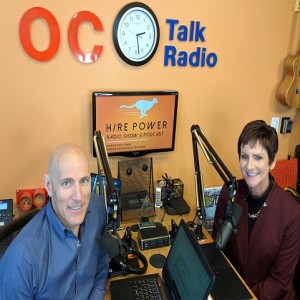
Friday Apr 26, 2019
Diane Lee: Interviewing Etiquette Brings Out the Truth
Friday Apr 26, 2019
Friday Apr 26, 2019
No longer can you, Mr. Hiring manager, get away with bad behavior in an interview and think you will be able to hire the person across the desk from you. When your offer gets turned down and you think it was because of a higher offer, know that was probably not the case. It’s you, not me!
Today’s Quote:
"Etiquette means behaving yourself a little better than is absolutely essential." - Will Cupp
Guest Bio:
Diane Lee is a foremost expert in providing professionals, specifically millennial workers, with the business etiquette best practices needed to successfully present themselves in the workforce. Diane founded Street Smart Etiquette in 2011 to empower millennials beyond the theoretical, offering hands-on workshops and individualized etiquette courses to help them master business soft skills, and ultimately achieve career success. She has conducted business etiquette classes on California State University campuses at Fullerton, Long Beach and Northridge, along with El Camino, Long Beach and Pasadena community colleges. Diane has been a featured speaker for many Los Angeles and Orange County community, civic and business organizations.
This venture builds on Diane’s successful career in journalism and business marketing. After graduating from California State University, Long Beach, with a degree in public relations and business, Diane made a career in Maui, Hawaii, where she played many roles in the hospitality industry and television, and was a freelance writer. In the consumer food product industry, Diane expanded the production and distribution of many Hawaiian brands throughout the Pacific Rim and western United States, and achieved millions in annual sales for her clients.
After relocating back to the Los Angeles/Orange County area in 2008, Diane found herself at the Disneyland Resort, where she discovered her passion for training and development in the Guest Relations department. That’s where the light bulb went off and the urgent need for interpersonal communication skills was identified. Diane earned her credentials as a certified trainer at The Protocol School of Washington, and is also a certified training designer through the Association of Talent Development (formerly ASTD).
Show Highlights:
- Why it is important to develop your interviewing etiquette
- Provide a checklist on what to do first
Problem:
Why is this important?
- The market is demanding it
- Evidenced by turn downs
How should you treat people in the interview?
- How do you get someone in the right mindset for your interview
- Get people comfortable
- Mindset: get the best out of the person by giving them the most
- Charismatic listing
- Good first impression & look credible
- Duschene smile - smile with your eyes!
- Offer a drink of water
- Be punctual:
- Discuss & contrast - 10 minute cutoff
- Story Bad experience:
- Kept waiting 45 minutes & had Dodger game on the whole time
Rick’s Input
- The people you are trying to recruit are the decision makers (Sellers Market)
- An accurate picture of what daily life is really like. Own your culture
- Be present
Solutions:
How does a hiring manager use Etiquette to their advantage?
Here is a checklist of what to do to maximize your interview experience.
- Greeting
- Personal presentation- etiquette is making the other person feel comfortable
- An air of credibility, one chance to make a first impression
- Remember the person’s name
- 5 minutes of small talk
- Ease the nerves
- Then get into the meat of the conversation
- Art of listening- leaning into the conversation
- Your Physical Cues
- Body posture, body language,
- 70% of people fail the interview due to lack of eye contact & smiling
- Charisma- everyone should walk out feeling like they really want to work for you
- Setting the person up for success - preparation, sending email re Parking.
Rick’s Input
- Approach each interview with Candor & Curiosity
- Hiring manager needs to set the example by being prepared
- No cell phone
Key Takeaways:
- Prepare for the interview, read & organize your info & questions. Check your personal presentation
- Make a genuine smile, positive body language, eye contact and active listening techniques automatic habits
- Get the most out of your time by ensuring the candidate is comfortable and you are relaxed & focused
- Set your candidate up for success with appt details, beyond time and place, such as expectations, as well as, traffic & parking tips to alleviate pre-interview stress
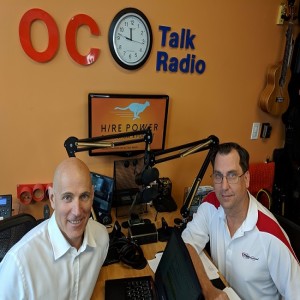
Thursday Apr 18, 2019
David Ferguson: Do Personality Assessments Create Lazy Interviews?
Thursday Apr 18, 2019
Thursday Apr 18, 2019
Do personality assessment tests really work? We are going to discuss the why, when & how to give assessment tests. Personally, I am not a big fan because they do nothing to develop the human connection which is so important in today’s hiring landscape.
Today’s Quote:
"Body language and tone of voice - not words - are our most powerful assessment tools." - Christopher Voss
Guest Bio:
Founder and original software developer, David Ferguson, was born into a manufacturing family by virtue of his father, the owner/operator of a fabrication job shop that still operates today. Now, with over 25 years of experience working in and writing software for the fabrication industry, David is considered an expert in the job shop arena. A sought-after speaker, he has consulted with numerous manufacturing companies around the globe, guiding them to become more efficient and cost-effective.
In the early 80’s, David created and sold his first computer program, Arrow Data Systems, a CAD/CAM system for the Apple IIe computer. During this time, he observed his father coming home late each night, only to begin the estimating process for his shop. David saw an opportunity to automate the estimating process using technology. As a result, the “Quote It” estimating package was born, becoming one of the leading sheet metal estimating packages in the world. Shortly thereafter, wanting to expand its capabilities, David developed the FabriTRAK Production Control Package. Over the years, it had been licensed to both METALSOFT and Amada America.
By the end of 2007, David had regained control of all FabriTRAK licensing agreements, completely re-wrote its production control offering, creating MIE Trak Pro. MIE Trak Pro is a state-of-the-art ERP system ideally suited to manufacturing businesses. It was designed to accommodate most production cycles and optimize the capabilities of repetitive, custom, quick-turn, and mixed mode operations. To launch his newly optimized program, he partnered with Don Clutter and founded MIE Solutions.
Since its inception, MIE Solutions has grown over 500 percent. In addition to North American sales and support locations, MIE Solutions operates offices in Australia, Mexico, New Zealand, South Africa, and the United Kingdom.
Show Highlights:
- Are personality assessments worth the time?
- What are the true results you can expect
Problem
- Personality Assessment Tests - Why should they be given
- Measuring against what you are looking for in a person.
- personality, Based on traits they think will be successful.
- Screening tool
- Do they damage the personal connection?
- Cultivate the transactional relationship?
- Create a lazy interview process?
- What if you are wrong about the traits?
- Judge against the company values?
Rick’s Input
- Assessments are not an identification tool
- The best tool is still a conversation
- Assessments are Transactional
- If used too early in the process, kills the human connection
- Personality traits do not ensure a successful hire
- Great to tell you how to manage after they have been hired!
Solutions
- Order in which tests should be given & Why?
- When should tests be given
- For skills, onsite after talking to a live human and engaged
- For personality, at the end.
- How should they be given
PXT test - cultural fit
Provides more confidence in the hire.
- Felt confident in a hire even though the personal side was not as clear
- Additive to what they feel they can do
- Flags people who give contradictory answers
Willingness to take the extra step has really amplified the level of quality and the people they hired
Results for David’s company
- Lower attrition
- Better employee treatment based on their understanding of the individuals
- Management tools for the tenure of the employee
- The exam is essentially the behavioral test?
Rick’s Input
- To Judge against a cultural fit, you must know your corporate values first!
- HUGE mistake - when company’s use it too early in the interview process.
- Must have a person emotionally engaged first
Key Takeaways:
- The assessment is just another tool in your arsenal
- If you are not comfortable with it, don't hire the person (rash decision)
- Don’t be rushed. Hiring is not an emergency
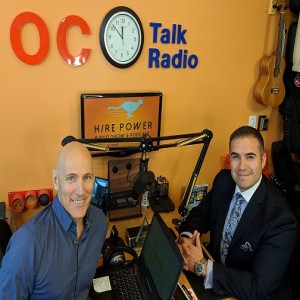
Friday Apr 12, 2019
Anthony Camacho- Sniffing Out Excellence When Hiring Salespeople
Friday Apr 12, 2019
Friday Apr 12, 2019
The average annual turnover in sales is 25 to 30%. That is the equivalent of hiring & training the entire Sales organization every 4 years! How do you know you are hiring a good salesperson? Why you look for evidence of success that is transferable to your organization. Today we are going to really help you sniff out the correct information to hire the right talent.
Today’s Quote:
"There are worse things in life than death. Have you ever spent an evening with an insurance salesman?"- Woody Allen
Guest Background:
Anthony Camacho is the Founder & CEO of Top Producer Factory. Having worked with start-ups to $40 million ‘small businesses’, Anthony is a sales and performance mentor to everyday entrepreneurs as well as Fortune 500 companies. He has personally cold called millions of dollars in sales, using techniques and strategies which he freely shares from the stage. A former Dale Carnegie Coach and certified sales coach through the Institute for Professional Excellence in Coaching, Anthony, 37, has 20 years of experience in cold calling, generating new prospects, bringing in new business, closing deals and managing sales teams.
Working with corporate clients, executives and small business rockstars; Anthony is currently on tour in the United States and Australia, delivering sales and leadership seminars and keynote talks.
Based in Southern California, Anthony – a father of four girls – is also a yogi, pursuing the lifestyle of Bikram Yoga in his downtime.
Anthony is the Author of 3 x best-selling books (Buy them on Amazon.com ») Anthony Camacho® has presented at more than 500 live events including TedEx style talks, workshops, seminars, Expos & industry-specific conferences. He has been a speaker/emcee for:
- Habitude Warrior Conference (Erik Swanson)
- Evolution Seminars (Matt Brauning)
- Free to Bounce (Paul Cummings Worldwide Enterprises)
- Guest lecturer (University of California, Riverside)
- Miss West Coast Beauty Pageant
- Corporate America including Fiesta Insurance Corp and Excellence Real Estate Empire
- REEMA Beauty Charity Events
- Various Chamber of Commerce
Show highlights:
- How to identify great salespeople
- How to sniff out the frauds
- What to do in the interview process
Problem:
How do we identify great salespeople
Both parties need to be prepared. The interviewee should be asking about growth, opportunity, and professional development. Rate people on the quality of questions they ask.
How they interview? No structured interview process. Sometimes they just want a body… mentality about hiring the right person… run on Turn & Burn. Companies don't consider how much how much they really lose by making the right hire. Ultimately, hurts the company morale and customer base. Referral hires - no shortcuts.
Managers take a Narrow view or let complacency set in
- Unrealistic High bar…. Looking for “rock stars”
- Status quo is a business killer
***Sales management -The reason bad sales hires are made, bad leaders hiring bad people. The biggest challenge is Mid-level Management. Mid managers are delegated.
*** Making people managers without training. How do I duplicate myself?
- Letting middle managers learn & grow… giving someone a shot. (hope strategy)
- Clarity on job description/expectations or even a clear compensation plan (not defined or clear)
- How they get paid…. They lose their enthusiasm
Is the C- level is setting people up for failure?
Rick’s Two Cents:
- Be wary of Stars!
- Research indicates an A player at one company doesn't necessarily transfer to another
- Train your leadership before they start hiring. I failed miserably when I was promoted to manager
- Test answers
Solutions:
What to do in the Interview process
- First prepare people & be prepared
- What to bring, and prepared questions to have for us
- Show the person that you are serious.
- Private office, punctual (preferred early),
- Observe how they present themselves, time frame.
Note: Starbucks & Denny’s are for MLM pitches.
What to look for: Anthony’s Ingredients of a good salesperson
- Integrity- trust with the customer
- Above and beyond in serving the customer
- prior job experience/history
- Loves door to door salespeople- most grueling job ever
- Manual labor- if they know how to sweat, making a phone call is easy
- Life goals, financial goals/aspirations = hungry for themselves
- Closing ratio/formula to make a sale. Day to day sales activities break down (know their numbers, how do you get to that?
Hiring Management:
- Promoting managers- good salespeople need to be trained to be a leader.
- Training received before becoming a manager. Time to learn before accepting the responsibility- learn how to delegate, motivate, lead
- Get a curriculum for leadership
- Companies managers/ not leaders
Rick’s Insight
- Focus on behaviors- Look for evidence
- Understand how customer relationships are developed
- Hire for core Values Alignment
- Cultural fit
- Look for transferable skills to provide growth opportunity
- Locating transferable skills requires creativity
- Training
Key Takeaways:
- Benchmarks •Know your closing ratio and understand the closing ratio for your team
- Desire •Does your sales professional and the team have a “BIG WHY” You can teach everything but you can’t teach desire
- Buy-in •Sell the objective to your sales team
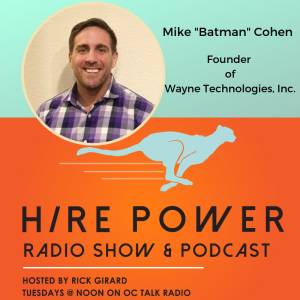
Friday Apr 05, 2019
Friday Apr 05, 2019
Diversity & Inclusion is critical to your company’s success but it is not a strategy. Here’s why... D&I needs to be built into the DNA of your company instead of being treated with kid gloves. Besides, hiring like-minded people is bad for business!
Today’s Quote:
"Our diversity is our strength. What a dull and pointless life it would be if everyone was the same." - Angelina Jolie
About the Guest:
Mike “Batman” Cohen is the Founder of Wayne Technologies, a recruitment training and search firm. Mike has over a decade of experience placing technologists, recruiters, and business development professionals, and has conducted training for Corporate and Agency Recruiters.
Throughout his career he’s learned several things that he’s committed to paying forward:
- We can’t make it on our own - we need community
- There is no “secret sauce” - we should be sharing our skills, tips, tricks, etc. openly
- Data is extremely important
- Being a good human is more important than data
He has worked with a diverse group of clients ranging from GIPHY, Spotify, TripAdvisor, Digital Asset, MacDonald Miller, etc.
He contributes articles to SourceCon, has a chair in the Program Committee with ATAP, helps run SourceHouston, and is a Brand Ambassador for ERE.
Mike has spoken at:
- Talent42 (June 2019)
- TechRecruit Los Angeles (July 2019)
- TechRecruit Chicago (September 2019)
- HireConf (October 2019)
- HRTX Dallas
- RecruitCon
- ATAP Webinars
- TalentNet
- SourceHouston
- ERE
- HR Houston
- Scala Up North
- Scala.io
Show Highlights:
- Why Diversity & Inclusion is not a strategy
- How to embed diversity into your Company's DNA while staying true to your company values
Problem:
Why is Diversity & Inclusion such a hot topic?
-
- Diverse communities are growing and matriculating faster than any other
- Organizations are realizing that diverse thought doesn’t just come from people who went to different schools or studied different subjects, it comes from background, upbringing, etc.
- We all want females, minorities & orientations.
- Candidates are placing a large focus on organizations that put a value on D&I - if you want the best candidates - this is one of the things that’s important to them!
Why is this important to organizations?
- Are we hiring because of D&I to check off boxes?
- Shouldn’t we be looking deeper into diversity of thought rather than physical characteristics?
- Hiring people who are different from you and are included in your culture
Shouldn't we just be concerned with hiring the best person?
- Just start hiring people who make you uncomfortable
- Embrace the differences
- Hiring like minded people is bad for business
What about the alignment of core corporate values?
- Define corporate culture.
Solutions:
If Diversity & Inclusion isn’t a strategy, how do we accomplish it?
- You don't want to hire someone just because they are a certain classification
- It has to go beyond “skin deep” - this isn’t about the way someone looks, it’s about integrating all different walks of life or trains of thought or images into your brand.
- Not to diversify to make things different, but to create a culture where diversity is the norm - that is how you create inclusion
- The desire to have different people is not a business strategy
- It is a top-down mind-set as to how the business operates and what it considers important, successful, and a good fit
- Vetting issue- how does one determine who the best person is. Not the values or mission
- Grey area- Defining the gray area or you will fail.
- Focus for cultural alignment vs skills
- Perks that attract like-minded people, like Ping pong and foosball tables & kegerators, reduce D&I.
- The Strategies to achieving D&I are merely the execution of a goal.
- Companies aren’t built on strategies - they are built on vision and mission - Strategy is simply how we get there - is your company built on top of a foundation (mission and vision) that doesn’t celebrate diversity, but instead values it as a competitive advantage?
- These values and mission themselves should come with a very diverse perspective.
- The more avenues of thought the quicker and higher quality it will take you to that mission.
Rick’s two cents:
What should be your strategy?
- Hire People who perform
- Hire People who bring different perspectives
- Hire People who will challenge you
Key Takeaways:
- D&I isn’t a strategy, it’s a business mindset
- Dissonance is a good thing! Just be respectful
- Diversity is a mindset, Inclusion is turning that mindset into the norm
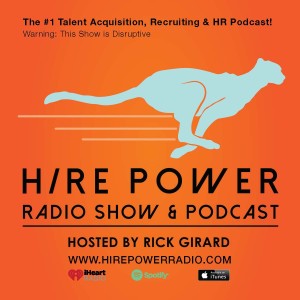
Friday Mar 29, 2019
Special Event: Erik Huberman from TiECon SoCal
Friday Mar 29, 2019
Friday Mar 29, 2019
Erik Huberman, Founder and CEO of Hawke Media, Managing Director of Nest Equity Partners, and Operating Partner of Arrowroot Capital Management
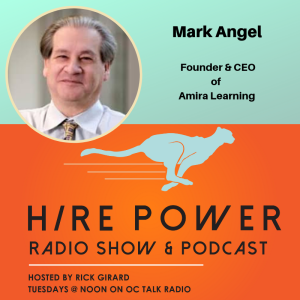
Thursday Mar 28, 2019
Mark Angel: How to Hire, Build Process & Lead in a Distributed Startup
Thursday Mar 28, 2019
Thursday Mar 28, 2019
What are the biggest challenges in building a distributed team as a startup? Today we discuss how to Hire, build process and lead in a distributed model. We will learn that uncovering the right people hinges on the Individual's desire and their emotional intelligence.
Today’s Quote:
“Completing one another is more important than competing with one another." - John C. Maxwell
Show Guest:
Mark Angel is the CEO and Co-founder of Amira Learning, the company reinventing learning to read with AI. Amira is a rapidly growing, venture-funded startup bringing the first intelligent reading assistant into K-3 classrooms.
Mark formerly served as Chief Technology Officer at Renaissance Learning, where he led the R&D organization and worked on the two most successful reading apps in the United States – Accelerated Reader and STAR. He has worked for 30 years in the Silicon Valley as a CEO, CTO and General Manager for innovators in the realm of Artificial Intelligence and Natural Language Processing (Ernst & Young, Nuance, KANA Software).
Mr. Angel is the founder of three successful start-ups. He is a chief inventor on more than 10 patents in the areas of search.
Episode Highlights:
- The Story of the Challenges faced when building a distributed company
- 3 biggest issues you struggled with
- Tools & solutions that worked best for your team
Problem:
Challenges in Hiring a Distributed Team:
- Hire for the distributed model
- Learn to screen for people who are truly able to function in a distributed environment
- People not really self-aware.
- Build process around the distributed model;
- Challenge: creating infrastructure and culture of behavior to help people to collaborate
- Choices in tooling that turned out to be wrong
- Have to "servant-lead" for the distributed model.
What issues have we struggled with around hiring?
- Where they will Thrive!
- People are not self-aware around work mode…
- The focus seems to be around the technologies they want to use or the comp they want.
Discuss the Model
- Need to put the issue up front before people get excited about the rest of the story and fool themselves and consequently us
Core Values alignment
- We need to be conscious that some folks like talking/collaborating and for others, it’s not the most pleasant part of the day. We aren't going to change a leopard’s spots.
Creating a situation where there is a balance of work and not having too many meetings. Keeping people in a place where they are getting constructive work behavior. Getting that work done but also helping others to get the work done. People are happiest when you find the “groove”.
Rick’s Challenges
- An issue of Upfront Expectations alignment
- Continually ask “Why”
Solutions
What have we done about this?
- Put this issue front & center in the interviewing process
- Getting out of the skills-based mindset.
- Screening - needed to find people who are able to cope with the nature of the model.
- Intentional about the need for people who are wired to work in a distributed environment.
- -talk about the distributed issue up front.
- Hired a recruiting expert
- Learned to screen for being at least somewhat "outgoing" and "opinionated"
- "Servant-leadership" for the distributed model.
How do we manage work?
Baking collaboration into everyday environment. Tools like google suite/slack/zoom/github/atlassian -- basically emphasis is on creating the norms around the tools. Understand when they should be using the tools
- Slack, Zoom, Gmail suite, Google docs works really well, hangouts did not for them.
- tools around design thinking.
- Set of heuristics and norms around the tools.
Allow people Flexibility
What went right & wrong in the process?
- right -- took a "team experiment" approach
- right -- recognized they needed help & hired an expert
- wrong -- didn’t push hard enough to create norms
Rick’s first step
- Take the time to understand a person’s desires before you “Pitch” the company
- People will tell you what they want. You just have to ask.
- "If you could design your ideal company, what would that look like for you?"
- A company where you will Thrive!
Key Takeaways:
- Hire people who are self-aware - Hire for EQ & cultural fit first
- Experiment with popular tools to find the tools that “best fit" for your team
- Recognize you are fighting human nature and hire to overcome

Thursday Mar 28, 2019
Special Event: Beerud Sheth from TiECon SoCal
Thursday Mar 28, 2019
Thursday Mar 28, 2019
Beerud Sheth, Co-Founder and CEO of Gupshup
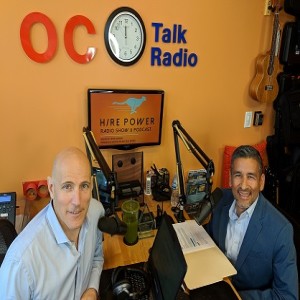
Thursday Mar 21, 2019
Ernie Basulto: Non-Verbal Clues to Discover the Truth in the Interview
Thursday Mar 21, 2019
Thursday Mar 21, 2019
Non-verbal communication and digging for clues to get to the root of who people really are. 93% of our communication is delivered non-verbally. Extracting the correct information starts with your openness and then observing how things unfold.
Today we are going to hone your ability to read people better in an interview!
Today’s Quote
"You don't have to tell me what your limits are when the decisions you make, your actions and body language says it all."
Show Guest
Ernie Basulto developed an early interest in cultural and human relations as he grew up in two separate countries. He was inspired by his father to develop the ongoing needs of the Hispanic workforce, and has done so by providing support and guidance to both business leaders and employees throughout his 26-year tenure in Human Resources. Ernie holds a Bachelor of Arts in Business Management from the University of Phoenix.
Recently, Ernie was a Senior Human Resources Business Partner at the 5th largest retail mortgage lender in the nation, and is currently the Director of Human Resources at Antis Roofing & Waterproofing. At Antis he provides leadership in all aspects of HR including hiring practices, establishes company culture, and guides employees to find their Purpose at work.
Episode Highlights
- How to build rapport
- Reading verbal and nonverbal cues (body language)
Problem
Focus on “Skills” clouds our vision so we misread people. Why is this such a problem? First, we need to get people comfortable in a manner that is congruent with your environment
- Open interaction
- Ask a Basic question: walk me through your resume to gather a baseline.
- Settle the nerves, get comfortable
- Observe & Mirror to build rapport
- Listening to them
- Experience questions where they tell him stories to evaluate thought process, how the person treats others, react under stress. You can tell a lot about a person by the way they tell a story
- Depends on the type of role they are hiring for.. Look for little signs, hints
- Example: story- stories focused on complaining about their company throughout the story. Pivot into what did you do to fix the problem. Tone of arrogance. He released him from the process and gave him the feedback.
Solutions
How do we structure the interview and what should we be looking for?
- Opening question to behavioral
- Company values, requirements of the position, Fit with the team (cultural fit)
- Hiring Manager > on occasion they meet with the team.
- So important at all levels, especially where you are exposed.
- Raising the bar on performance
Reading Body language
- What to look for?
- Depends on your culture/environment
- Positive body language
- Body Language flags
Rick's Points
- Be Aware of your own body language! Open & Positive
- Past nervousness, fear & discomfort
- Important to make people comfortable first
- Get past
- Mirroring- Unconscious sometimes
- person trying too hard to build rapport
- Shoulder movements communicate emotions
- Positioning & movement
- Uncertain or lying -slow rise - lack confidence
- Extreme behaviors- pay attention
Key Takeaways
- Observe & Mirror
- Get past the nerves
- Shoulder movement tells all!

Wednesday Mar 20, 2019
Special Event: Brian Frankel from TiECon SoCal
Wednesday Mar 20, 2019
Wednesday Mar 20, 2019
Brian Frankel, Marketing Consultant of Ignite.Consulting, TiE Charter Member, and Founder, of Mentor Matchmaker

Tuesday Mar 19, 2019
Special Event: Ravi Sharma from TiECon SoCal
Tuesday Mar 19, 2019
Tuesday Mar 19, 2019
Ravi Sharma, Co-Founder & CEO of OOtify, TiE Charter Member, Investor, and Mentor
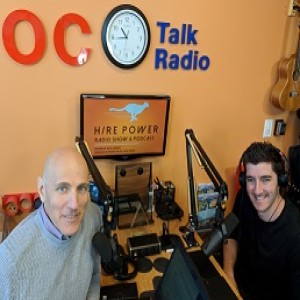
Thursday Mar 14, 2019
Erik Huberman: Dissecting a Hire Gone Wrong
Thursday Mar 14, 2019
Thursday Mar 14, 2019
The mistakes we, as entrepreneurs and hiring managers, make when building our companies. Often our need to fill overrides our logic in determining the fit between both parties and as result Core Values are often ignored. Assumptions, unclear expectations, and lack of diligence make for a perfect storm of a disastrous hire.
Today’s Quote
"Hiring people is like making friends. Pick good ones, and they'll enrich your life. Make bad choices, and they'll bring you down." - Jason Fried
Show Guest
Erik Huberman is the founder and CEO of Hawke Media, the fastest growing marketing agency in the United States. Launched in 2014, Hawke Media has serviced over 1000 brands of all sizes, ranging from startups like Tamara Mellon, SiO Beauty and Bottlekeeper to household names like Red Bull, Verizon Wireless and Alibaba. Hawke Media has taken home numerous industry awards including inclusion on the Inc. 5000 2017 list of “Fastest Growing Companies”, Fortune Magazine’s “50 Best Workplaces in Southern California” and Forbes’ “Content Marketing Companies to Check Out in 2018."
"Prior to Hawke, Erik founded, grew and sold two successful e-commerce companies. Huberman is the recipient of numerous awards including Forbes “30 Under 30,” Inc. Magazine’s “Top 25 Marketing Influencers,” and Best in Biz North America’s “Marketing Executive of the Year.” A regular contributor to major publications like Forbes, Entrepreneur and CS Q. Huberman is also a well-known keynote speaker.
Episode Highlights
- Break down one of your early hires and talk about the decisions that were made and why
- What we learned and how you can avoid making our mistakes
Making a wrong Hire: Walk through the story
- Hired an executive, all-star, great background
- “Why would you buy a dog if you're the one barking on the corner”
- Discussing expectations, but not the HOW.
- Had a budget, revenue numbers, really clear…
- Takes time for executives to ramp up
- Hired from a large company- a different mindset
- Taking people through a more formalized process.
- Properly frames the mindset as a professional environment
- You are taken more seriously
- *Onboarding Process
- Didn’t have a process. Throw people to the wind
- Unprofessional entrance + people didn't view it professionally
- Made the mistake of selling perks
- Hired 7 people in the beginning, only one stayed past 6 months.
- Bridging the gap with the business.
* Post hire, you are not done once you made the hire. Once someone is hired, real-time investment into their success.
Rick’s Hiring Mistake
- Hiring Friends without clear expectations
- created an expectations document
Key Takeaways
- Stick to a hiring process - It must be Professional
- The more senior the hire, the more time investment to align expectations - May take up to a year to come up to speed

Thursday Mar 07, 2019
Tevis Trower: Re-Humanizing the Interview Process By Shifting Our Language
Thursday Mar 07, 2019
Thursday Mar 07, 2019
We don't hire for human competency but for skill set. Our language is inhuman in spite of the very real experience of working with HUMANS. People want Connection and Authentic Interaction. We need to understand What makes you, you?
Today’s Quote:
“Learn everything humanly possible about everyone you do business with." -Harvey Mackay (Swim with the Sharks)
Show Guest:
CEO of Balance Integration Corporation | Advocate for Corporate Culture & Employee Engagement
Tevis Trower is a pioneer in optimizing corporate cultures. Heralded in bestselling Megatrends 2010 as “corporate mindfulness guru for the new millennium”, Tevis has assisted powerful organizations ranging from Disney to Morgan Stanley in optimizing their most precious assets: human beings. She has created and facilitated global executive immersions for prestigious organizations including Harvard Business Review Events, Young Presidents Organization, PWC, Bloomberg LP, Viacom, Google and The Economist on issues including mindfulness, executive lifestyle, personal mastery, innovation, and the role of consciousness in creating radical success.
You can find profiles and expert advice from Tevis featured in respected media outlets including Forbes, Fortune, BusinessWeek, Glamour, YogaJournal, CIO, Pink, RealSimple, Crain’s, New York Post, Financial Times, WWD, New York Observer, MSNBC, FoxBusiness, NY1 and Martha Stewart. As NYU Faculty teaching Business Creativity & Personal Mastery, Tevis has also served as worklife expert to WebMD and Huffington Post. Tevis lives what she teaches spending time in NYC, Montauk and Woodstock, enjoying surfing, snowboarding and entertaining friends at home with her dachshund, Ruby.
Episode highlights:
- Why it is important to re-humanize your hiring process
- Changing the mindset by shifting the language
- The formula for a successful shift
Problem:
Why is this important?
- Because we focus upon skill development to get into the roles we aspire to, we buy into the notion that work and life are separate. But the reality is that we are only one person, one being.
- Through this buy-in to self-abnegation, we leave ourselves out of the workplace and all but guarantee to burn out and disillusionment. When we approach interviewing that way, we’re bound to forget that the person across from us is first and foremost a human being.
- Impostor syndrome of the interviewers (hiring managers!)
- IS-is there a place for me here? Everyone feels a little like a fake/fraud.
- Myth: This person is only as good as their resume.
- Truth: Most of the best people, have the worst resumes
Mindset
- Creating a corporate culture happens one conversation at a time. Talking about what you are passionate about, what matters to you.
- Work is home
- It is a demand market.
- * we forget we are hiring a human being… not filling a seat.
- Bring an entire life into the company
Rick’s Thoughts
- Stay away from “stinkin thinkin” - Transactional thought
- Judging people based on a piece of paper
- Restructuring the recruiting department to touch those who apply
Solutions:
By shifting the language we begin to shift the mindset.
Changing the language - humanize
- What does it mean to be human at your company?
- Don’t talk headcount, filling a seat
- life count, heart count.
- Talk about finding the “right new colleague”
- Not filling a seat or role, rounding out our community
- Shift to human terms
The breadth and depth of this person.
- Talk about the eulogy and not the resume
- Think of everyone in terms of a peer
- Values -
- The framework is in the questions, not the answers
If the adage is that people leave managers, not companies, they probably refuse offers from managers as well. Foster a culture that supports the value for success. Are they Google-ly? And what happens when being googly becomes a weakness? Homogeneity can be a downfall.
Rick's Plan
Cut out words like “candidate”, Job Description, industry terms
Key Take Away:
- Tune into your own Humanity
- Humanize the language
- Slow down the interview process to give more room & space
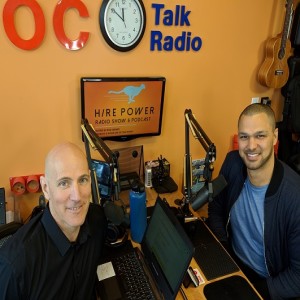
Thursday Feb 28, 2019
Thursday Feb 28, 2019
Before you hire, you need a clear understanding of what you need and Why. What is required needs to be focused on the work that needs to be accomplished. And that’s Why it helps to prioritize the level of importance.
The most crucial part of the recruiting process is understanding why this is really needed. It is often overlooked.
Today’s Quote:
"There are no secrets to success. It is the result of preparation, hard work, and learning from failure." -Colin Powell
Show Guest:
Greg Toroosian has spent the best part of a decade recruiting for technical positions across software, IT, and hardware verticals. He also has experience building non-technical teams including finance, marketing, business strategy, legal and operations. His career started in the UK as an agency recruiter working with companies in various industries and at different growth stages. He’s currently the Director of Talent Acquisition at sweetgreen where he oversees the team that manages all corporate hiring for technical and non-technical teams. sweetgreen is set to grow rapidly this year due to their focus on technology and the recent large round of investment they received.
Episode highlights:
- Defining what is needed and why
- Our Methods for defining and prioritizing your roles
Problem:
- Hiring managers don’t really know what they need
- Understand the gap, skillsets, and planning for growth
- I need another one of this person
- Job description we used last time
- Factoring in lead time to make the hire and then bring someone up to speed.
- Realistic Timelines
- Inefficient time spent on the wrong people because the hiring manager is really not
- Sitting down and outlining the work that needs to get done
- Prioritizing the work
- Setting performance benchmarks
Solutions:
Focus on the What and then the Why
- Greg’s Intake Process to define the What & Why - Request Greg's Intake Form: andrea@stridesearch.com
- Prioritization: is this really needed?
- What will the person be doing?
- How will that add value here?
- How is the work being done right now? (light bulb of urgency)
- Forward-thinking- hiring ahead of the plan
- Hire toward the body of work
Rick's Input:
- Write down the actual work that needs to be done with a timeline
- Define the expectations by setting at least 3 Performance metrics for the first 90 days
- The Problems that need to be solved help to gain emotional buy-in
- Tie the work to Growth - Impact
Key Take Aways:
- People are attracted to the problems you solve
- For hiring managers: Upfront time spent configuring the process and fleshing out then real need is crucial to a successful, smooth and efficient process. Give your recruiting partner adequate time, think through the real need and purpose of the role, and be clear on what the success criteria is.
- For recruiters: Know that this is where you can add a lot of value as a partner. Be confident in the questions you ask, be inquisitive, think about what you need to align on and focus on unearthing that information. This document and the information it contains will be what you refer back to throughout the process to make sure you’re on the right path and to push back when necessary.
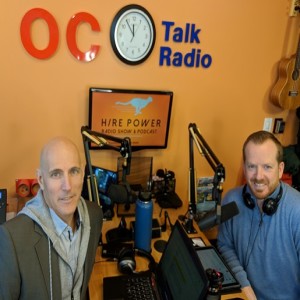
Thursday Feb 21, 2019
Thursday Feb 21, 2019
Employer branding is a very hot topic! Today we are here to challenge conventional wisdom and say that people pitch their company and themselves wrong.
They pitch what the company does and the perks they offer rather than the problems they are solving first. Talented people want to solve challenging problems!
Now I am a huge believer in looking at what everyone else is doing and doing the opposite… it works for me!
Today’s Quote
"A problem is a chance for you to do your best." - Duke Ellington
Show Guest
As a global Keynote Speaker and Managing Partner of InfluenceTree, Ryan Foland helps executives harness the power of vulnerability and authenticity to build better, more relatable, more profitable brands. Recognized by Inc. Magazine as a Top Marketer and named a Top Personal Branding Expert by Entrepreneur Magazine, Ryan is the inventor of 3-1-3® Method, a discovery process that helps communicate ideas into three sentences, which is condensed into one sentence and then ultimately boiled down to three words. His book Ditch The Act: Unleash the Surprising Power of the Real You for Greater Success, will be published in October 2019 by McGraw-Hill. When he is not speaking, he is likely sailing.
Episode highlights
- Why the positioning of your messaging does not attract people to your company
- Share our methods for engaging talent to be drawn to your company
Problem
- No one cares what you do or who you are.
- Try instead promote the core problem you solve.
- Lack of Aspirational influence.
- People not Inspired by the impact your company will have on the world
Psychology
- The mindset of the person you are talking to when presenting your opportunity
- Reptilian brain- in charge of our survival
- Fight or flight, sexual behaviors, anger & fear reside
- Keeping people out of the fear zones
- Rick’s Switch theory
- The words that you chose to come out of your mouth either turn people on or off
Solutions
3-1-3 process - Tease out the problem you solve to uncover the actual pain! Solve the problem of.....
- 3-problem you solve in one sentence (problem, solution, market)
- 1- condense to 1 sentence
- 3- Words (Marriott of marketing)
Pain being solved by the position & pain of the company that they solved by their customers. Alignment of pain points.
Eliminates being another me too company
Example of a good 3-1-3
The difference between success and failure hinges almost entirely on a company’s ability to hire the right team. One bad hire can destroy the company. We provide a step by step process that eliminates wrong hiring decisions. Startups need a competitive advantage when fighting for talent.
Rick’s first step
- Open with a slap in the face by Locating a career wound!
- Locate the pain first. Match the problems solved with the solutions the person can gain by joining your company.
- Lead people down a path and let them draw their own conclusions
Key takeaways
- Nobody cares about the words coming out of your mouth
- People are attracted to the problems you solve
- Change your messaging! Problem, Solution and Market
Ryan's Social Media

Thursday Feb 14, 2019
Chris Russell: Better Ways to Post & Pray Your Job Descriptions to Life
Thursday Feb 14, 2019
Thursday Feb 14, 2019
"Post and Pray" yields mediocre results and yet It is the go-to method for most companies, especially startups. Look, dating apps have evolved so let's take a page from them and figure out creative ways to attract talent. After all, your companies success or failure hinges on it!
Today’s Quote:
"Pleasure in the job puts perfection in the work." - Aristotle
Show Guest:
Chris Russell is the Managing Director of RecTech Media. He is a digital recruiting expert. He began his career as a job board owner where he first learned the craft of attracting talent online. He's also a former corporate recruiter with real-world experience in the recruitment process and technology implementation.
As as a recruiting technology/marketing consultant he advises both employers and vendors on how to attract candidates or clients. He frequently blogs on the news site, RecruitingHeadlines.com, podcasts a weekly show called “RecTech” and conducts live video training on recruitment marketing tools and tactics at RecTechLive.com.
Episode highlights:
- Why you should look at approaching job postings differently
- The best ways to market your opportunities
- Tools available to help you automate the process
Let’s talk about the approach almost all companies take
- Write “job descriptions” (wish lists)
- Do Not copy old ones!
- Post on job boards
- Farm the Job boards
- Passively work employee referrals
The Job Description Format
- -short 300 words or less - According to Linkedin?
- Employer value proposition
- Q&A job descriptions
- Video
- Cybersn.com
- Harry joiner - long form job
Rick’s Format:
- Build your job descriptions around uncovering a Career Wound
- Build in Performance Metrics! - Let people know how they will be evaluated in their first 90 days
Tools to Use
- Ripl- social media video slideshows
- Buffer, deliverance, smarterqueue
- Legend.im- turns text into animation gif
- clipomac
Where & How to Post
- Indeed- biggest board out there. - active candidate pool
- Linkedin-
- Facebook job board-blue-collar, hear
- Google for jobs - Take advantage of all the free avenues
- Take an Omnichannel approach- you need to be on all the channels. Be where your candidates are and continuously add content
- Automate the flow of content out.
- Be resourceful - text or email creative pictures (you next to a whiteboard with the person’s name written on it)
- Angelist?
- **Pushing out to facebook, twitter & LinkedIn. Video gets the most engagement and exposure
- Times to post 4-6 pm at night FB- 3 pm on Wednesday
Key Take-Aways
- Go Short or Go Long!
- Re-format your job descriptions to Attract people! Define the % of time spent on tasks as well as performance metrics
- Market your jobs by taking an omnichannel approach
- Get Creative & use Tools to automate getting out your message
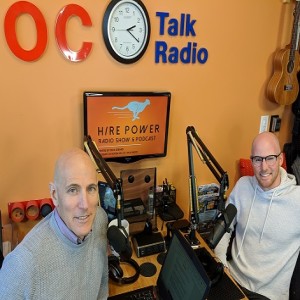
Monday Feb 11, 2019
Monday Feb 11, 2019
Today we are discussing the Steps to building & scaling headcount in growth mode. Making sure that execution & time to fill are aligned.
Today’s Quote:
"Growth is never by mere chance; it is the result of forces working together." - James Cash Penney
Show Guest:
Brendan Rogers, Co-Founder & Leading Recruiting of Wag Labs, has raised over $360 million in venture capital, most recently $300 million from Softbank's Vision Fund. Wag! connects pet parents to dog walkers and is currently live in over 110 U.S. cities. He co-founded a social discovery service to meet new people which grew to over 50 million users in over 10 countries and was acquired by IAC in 2014.
Brendan's next big event will be speaking at the ERE Conference on April 22-24th.
Episode Highlights:
- How to ramp up from 0 to hero
- Steps to put in place to avoid making hiring mistakes
You company closes your first round of funding
- 10 -12 roles from Nothing
- no resources & no systems in place
- Spreadsheets, manual task-oriented, process
Preparation before go mode
- Building out pipelines, similar spaces, consumer-related companies.
- How to avoid making the wrong hire.
- How to scale for maximum impact
- Tools needed. Process in place, a foundation to scale.
- Get really good at identifying the right people, connecting the dots, sourcing- research
- He does a ton of research, knows his space.
- Strive to keep quality really high. Target specific businesses.
Action Plan & Execution
- First hire should be a recruiter
- Identify what is needed & write job descriptions
- Right messaging
- Tackled building pipeline, hired.com
- Spreadsheet
- Hired a recruiter, brought in an ATS (applicant tracking system)
First:
- Get an ATS system first! -like Newton, Google (hire with Google) Greenhouse, lever
- - take open requirements and intake with each hiring manager. Know the roles from top to bottom
Second:
- Build a pipeline, training managers on how to use the ats, become partners with the hiring managers
Third:
- Hire a recruiter only after 5+ open roles.
- Admin- for cost savings
- Having a foundation will only help you to scale.
Key Take-Aways
- Be best friends with your Hiring Managers
- Be on top of everything
- Always be available
- Invest in the right tools
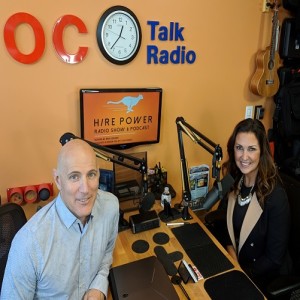
Thursday Jan 31, 2019
Shannon Johnson: Having the Right Mindset to Get Hired
Thursday Jan 31, 2019
Thursday Jan 31, 2019
A great hire happens when Career & Hiring objectives are in alignment.
Now more than ever, people want to feel whole in their careers and personal development has taken the lead in the decision-making process. Today we are going to look at hiring from the Interviewee’s perspective.
Today’s Quote:
"The things that bring you the greatest joy are in alignment with your purpose" - Jack Canfield
Show Guest:
As a Success Mentor, Shannon Johnson's passion for people has been the common denominator of her success throughout her 25 year career in corporate America. Today she is founder of her company, Stand Out and Get Hired, inc...taking one of her most successful achievements in launching best-in-class products to market, to now, launching the most exciting product of all...our future leaders.
Shannon worked for leading Fortune 500 companies in the retail, staffing, and pharmaceutical industries. Holding positions in marketing, management and sales, she has always been attracted to innovation and addicted to influencing others to think differently and get better every day.
Her mission is to inspire ambitious, driven, college students to take action in preparing to embark on their careers where they will thrive. She knows that Everything is possible when you believe in YOU FIRST & take action!
Episode highlights:
- How to hire & get hired in the right role
- The 3 pillars to “Stand Out & Get Hired”
Mindset
- Getting your game plan together to successfully get hired
- Settling for a “job”
- How do you get the interview first?
Preparation
- Not performing at 100% in an interview kills your confidence
- Interviewing burns people out, then you lose momentum
- Emphasis on the Resume- important but not
- The resume is really a screening tool for the company!
Why is this important
- Being sold on the Mission!
- Bring your value and strengths to life
- Mastering the skill of interviewing
- Prepare for what will happen
- Practice- mock interviews
- Put your “Game face” on
How does a person/company stand out to make the right decision
- Know your values
- Your Why
- Target what you Desire
- Take Action
Shannon’s plan
- Building your Brand
- Expert in You… values, vision, strength building
- Strength dashboard- strength finder assessment
- Grow your quality network
- Linkedin network, utilizing, leveraging and maximizing relationships that already exist
- Sharpen your Interview Skills
- Skills to beat your competition
- Fundamentals: approach the opportunity, preparation (dress, execution)
- Interviewing is a behavioral test. (highlight stories around 10 different behaviors)
- Practice, follow up (stand out and be memorable)
- Be relentless with follow up!
Rick’s Input
- Identify target companies (no spray and pray)
- Utilize Linkedin, Separate yourself from the pack (rise above)
- Be pleasantly persistent & ask for the Interview
Key Take Aways
- Align with your purpose
- Take action to beat your competition
- Self Awareness, Grow your Quality Network, Sharpen your Interview Skills
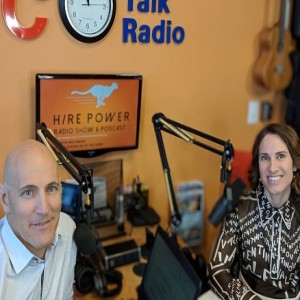
Thursday Jan 24, 2019
Katie Weber: Evaluating Your Team to Get the Right People in the Right Seats
Thursday Jan 24, 2019
Thursday Jan 24, 2019
Today we are talking about Workforce Planning and our goal is to provide Clarity of what is really needed vs. what you think you want. Evaluating Your Internal Team and Your Mission is crucial to get the right people in the right seats at your company!
Today’s Quote:
"Never look back unless you are planning to go that way." - Henry David Thoreau
Show Guest:
Katie Weber, Founder & CEO of KMW Recruitment Consulting, a recruitment and coaching firm specializing in high-growth and transition scenarios for small to mid-size companies. With nearly 20 years of diverse recruitment experience, Katie has worked around the world with early stage start-ups to Global Fortune 500s. She now utilizes that experience to quickly assess recruitment challenges, recommend and implement best practices, and find creative solutions ranging from engaged search to plug and play recruitment teams for her clients. She has developed a Recruiting Search Framework with supporting tools that facilitates organizational communication, reinforces recruitment branding, eliminates bias, and attracts the right talent. With the addition of High Performance & Career Coaching, she ensures that the candidates she places change the game with levels of confidence, employee engagement, productivity and influence that are off the charts. Her hires are often the company's best hires and top performers. The company motto is: It's not just about filling a position, it's about fueling your mission!
Katie serves on the Advisory Board for London-based start-up, Grad DNA, holds a BA in Psychology from Elizabethtown College, and has a coaching certification from High Performance Institute. She is available for speaking engagements or workshops and will be a speaker at the April ERE Recruiting Conference in San Diego.
Episode highlights:
- What happens when you don't plan?
- Where to start
- How to implement your hiring plan
Why is it important?
- Run Lean- Instagram sold for $1B to Facebook with just 13 employees (2013)
- Cost of a Bad Hire
- Kills Morale, productivity
- Disengagement is contagious
Planning & Kicking off your hiring plans for 2019
-
- Evaluating the Mission
- Defining what needs to be accomplished
- Think about leadership first.
- Evaluate the team that is already in place (workforce planning)
- Budget & Timeline
- The volume of positions needed to be filled, vs lack of internal leadership to manage them- open headcount before leadership.
- Evaluating the Mission
- Invest in hiring / promoting strong leaders
-
- To chose the right recruiting strategy (partner, in-house recruiter)
Define who “We” are and Who we need
- First Who, Then What - Jim Collins
- Dare to Go From "Good to Great" - “First the people, then the direction”
- Get the Right people on the bus, In the Right seats
- Get the Wrong people off the bus
Evaluating your internal team
-
- Cultural fit (Values, Attitude, Mission Ownership)
- Education & Training required
- Provide resources
- Work Performance
- Current
- Growth
- Accomplishments- Recognize even the small wins
- Fulfillment- breeds engagement > Increased Productivity
Employment Branding/Messaging
- Define the 3 things that are most important to them in terms of the job search
- (open leadership) for greater collaboration
- Top 3 trait alignment
- What does that mean
- Usually describing a company challenge
- Transparency
Take Aways
- Evaluate your mission, evaluate your people
- Over communicate everything!
- Fit people into your Company and not your Job

Thursday Jan 17, 2019
Liran Kotzer: Will AI Really Keep People Engaged with Your Company?
Thursday Jan 17, 2019
Thursday Jan 17, 2019
What do perspective Employees really want? A Personal connection or an automated interaction? I argue personal connection!My hope is that AI will be the disruptor that eliminates the transactional relationship from the recruiting process. AI is here and already starting to affect the way in which people interact with potential employers.
Today’s Quote:
"Automation is going to cause unemployment, and we need to prepare for it." - Mark Cuban
Our Guest:
Liran Kotzer, Founder & CEO of Woo.io. A serial entrepreneur, Woo.io is Liran’s third startup. For the past decade, he has been immersed in helping redefine and advance the online tech recruiting and hiring market sector. Liran spotted a market gap for helping employers and tech talent find each other much more efficiently, without all the hassles and wasted cycles between the two groups.
Show hightlights:
- Where AI is already having an impact & where it is REALLY useful
- Should you Leverage AI to maximize your impact (employment brand awareness)
What AI can and cannot do NOW in terms of recruiting
- very interaction is totally transactional- can not be humanized...yet
- Can’t yet fake a “Personal” connection
- The nuances of human interaction
- @scale- need technology to do the heavy lifting
- Continuing an ongoing relationship
- Automation using AI & ML
- What do people (candidates) really want?
- Personal connection to release or an automated release?
- Communication, feedback & closure
- Cultivate a relationship for relevant skills for future
- Can automation REALLY cultivate relationships??
- No- Neither can email or texting
What recruiting functions is AI replacing
- Transactional components
- Sourcing, Gathering intel (contact information), Farming
- Process
Where is AI in recruiting relevant now
- AI & ML to keep a pipeline warm.
- Ability to create communication with the candidate in a unique & personalized way to help them to keep them engaged. To be able to recognize changes in behavior.
- Understand your relevant audience. Can do the job and feed the culture (flexible)
- Expand your target audience ("official" resume vs. True Skills)
- Content?
- Skills-based recruiting
Take Aways
- Shifting from transactional recruiting into a long term relationship is a critical component for winning the right talent ahead of the competition
- Technology can mainly assist you in maintaining long term relationships with your pool of talent and also with scouting the right people at the right time
- Technology will not replace human interaction.
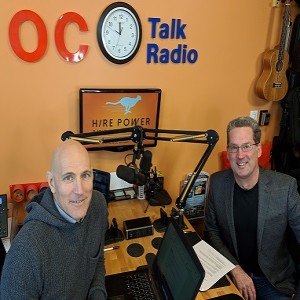
Thursday Jan 10, 2019
Craig Weber: Interviewing for Conversational Capacity
Thursday Jan 10, 2019
Thursday Jan 10, 2019
Conversational Capacity is the ability to balance Candor and Curiosity under pressure. Critical elements to every entrepreneur and business leader who are building an organization. And yet this element is often overlooked in the hiring process.
The great news is, it can be taught!
Today’s Quote:
"The single biggest problem in communication is the illusion that it has taken place." - George Bernard Shaw
Show Guest:
Craig Weber is the author of the best-selling book, Conversational Capacity: The Secret To Building Successful Teams That Perform When The Pressure Is On (McGraw-Hill, 2013) and Influence In Action: How to Build Your Conversational Capacity, Do Meaningful Work, and Make A Powerful Difference (McGraw-Hill, 2019) (Amazon.com). He is also the founder of The Weber Consulting Group, an alliance of experts committed to helping people build more resilient, healthy, and agile organizations. He helps people and teams dramatically improve their performance by treating dialogue as a discipline.
He works with people and teams from such diverse organizations as Boeing, The Royal Bank of Canada, Kaiser-Permanente, PWC, The CDC, the Pancreatic Cancer Action Network, and Los Alamos National Labs. He’s also working with legislators in an expanding list of states to help them engage in more constructive policy debate.
Episode highlights:
- What is Conversational Capacity & Why is it important
- How do you interview someone and accurately evaluate their conversational capacity
- What our audience can implement today to hire & manage stronger
What is conversational capacity?
- Definition 1: Constructive, learning-focused dialogue about difficult subjects, in challenging circumstances, and across tough boundaries.
· Definition 2: The Sweet Spot. Where candor and curiosity are in balance. Open, honest, direct, yet open-minded, humble, and eager to learn. This is where the best learning occurs. Smart people working smart. - Elements / Communication Traits
- When triggered: MIN Low candor. WIN Low curiosity.
- Need the ability to remain balanced. Everyone struggles, but often in very different ways.
Why is it important?
- Defines teamwork. A team that can’t communicate when the going gets tough isn’t a team.
- Why good intentions are never enough: The gap between how people believe they behave bow they actually do.
- Work the issue on both sides: Hire for Attitude and personality (fit) and then build your team’s conversational capacity.
o Hire right, then create a “Conversational Code of Conduct” – clear behavioral norms; formal or informal– to align team behavior with organizational strategy.
How do you recognize and evaluate
- Evaluation of the process
- Well thought through the process
- Preparation emphasis- prep call beforehand
Interviewing for Conversational Capacity
- Locate evidence of past experience
- Personality Assessment
- Behavioral Interview - questions
- Tell me about a time you had to give negative information up the chain to your boss. How did you handle it? What did you say?
- With a colleague?
- To someone who you managed?
- Tell me about a time you were really wrong about something or someone.
- What was your family dinner table like growing up?
- Mock Interview!
- People can learn to converse in a more disciplined, balanced manner. There are skills.
- To be good at working in the sweet spot, everyone needs to do some work. If someone is UNWILLING to do that work, well, let’s just say there are some people you’d prefer were working for your competition.
- CCOC
Key Take Aways:
- conversational capacity needs to be on your management dashboard
- It affects every aspect of your organization’s performance from decision-making, to managing change, to running meetings, and implementing strategy.
- Hire the right people and then make sure you manage them in a way that allows them to bring their best work to your business.
- Get the right people around the table (ability to learn; right temperament, etc, and then build CC of team. Each person will have to do some work to stay balanced.
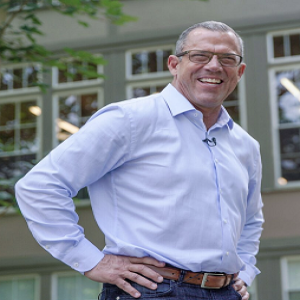
Thursday Jan 03, 2019
Joe Mullings: How to Choose the Right Recruiting Partner for the New Year.
Thursday Jan 03, 2019
Thursday Jan 03, 2019
A true partner has your back! Look for the person who shares your values and invests the time to understand the intricacies of your company.
Today’s Quote:
"Destiny is no matter of chance. It is a matter of choice. It is not a thing to be waited for, it is a thing to be achieved."
- William Jennings Bryan
Show highlights:
- Reflect on your internal process
- Walk through understanding & managing expectations
- Provide you some tools to evaluate the right partner for you
Be honest about your internal process
- What are your main hiring challenges
- moving too slow?
- Too many cooks in the kitchen.
- Recruiter relationship
- Type of search you choose makes a huge difference
Clearly define & communicate Expectations
- Partner for process
- Partners ask for a slide deck & messaging collateral at a minimum
- Diligence
- Ask for a synopsis of what they think they heard, what the positions about what methodology and the messaging they are going to use
- How you are being represented is crucial
- Candidate Management expectations
- What will I become? Make it easy for the individual.
- Make it easy for the person to plug in. put together a landing page, catered toward the person.
- Ghosting is unacceptable on either front
- Live document to get them to lean in.
Recommendation for evaluating the best firm for your needs
- Evaluation of the process
- Well thought through the process
- Preparation emphasis- prep call beforehand
- Ask for references
- The last 3 candidates placed- How well did you service the people who did not get the job
- How did you represent your candidate on behalf of your client?
- Agility and endurance
Learn about the liability of the organization
- How do people handle information
- Over-indexing toward behavior way too far to the left
- Stability is really an illusion, It doesn't exist
Words of Wisdom
- Compensation goes up and down due to interest level.
- Cadence- value of cadence
- Provide a flex deck tease
Joe Mullings is a serial entrepreneur, Founder, and CEO of The Mullings Group (TMG), the world’s leading executive talent acquisition firm in the medical device industry. TMG specializes in cultural transformations for emerging technology start-ups and has placed over 5000 people in over 500 companies. Joe is an innovator and thought leader who has been featured on CNBC and in The Wall Street Journal. Joe’s philosophy ‘Build, Inspire, Teach’ has guided his work over the past 25 years specifically through his establishment of The Mullings Foundation, a non-profit with a focus on supporting veterans of war during times of transition. Joe recently served on the board of MassMEDIC and holds a BS in Engineering from the University of Dayton.
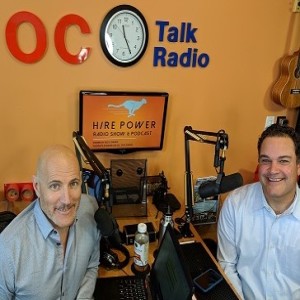
Friday Dec 28, 2018
Brenan German Part Deux: Overcoming Your # 1 Hiring Failure for 2019
Friday Dec 28, 2018
Friday Dec 28, 2018
The One change you must make for 2019. Overcoming hiring failures. Spoiler Alert: it is your Interview Process… 1950 called and they want their process back!
Today’s Quote:
"I can't change the direction of the wind, but I can adjust my sails to always reach my destination." -Jimmy Dean
Show highlights:
- Divulge the secret of an effective interview
- Halos & Horns
- Layout our interview structure
Up front, What is the secret to an effective Interview?
- Process
- Alignment
- Engagement
Halo’s & Horns
- Bias, Conclusions & Assumptions
- Your attitude determines your altitude
- Gut decisions
- Coin flip methodology
Effective Interview Structure
Brenan’s Format
- Plan
- Build
- Decision
- Scoring methodology
- Practice
Rick’s Format
- Structure (Organized, Timed, real time feedback)
- Pre-determined questions
- Give & Receive Feedback
Differentiate your company by closing the process with Everyone you decide not to move forward with!
Brenan German is Founder and President at Bright Talent Resources, Inc., a boutique Human Resources Advisory, Project Management, Training, and Recruiting Services firm.
As lead consultant, Brenan acts as an advisor to organizations wanting to re-engineer or develop a high performing, measureable, technology enabled, human resources function. Brenan has over 20 years of hands-on Human Resources leadership experience developing intelligent and successful talent management functions within some of the country’s most respected and well-known companies such as The Gallup Organization, Edwards Lifesciences, and Black & Decker. Brenan’s particular expertise involves the alignment of talent management strategies to business goals, and the implementation of systems and processes to reach measureable objectives, demonstrating clearly the bottom line impact expected of strategic Human Resources programs.
A graduate of the University of California, Irvine, Brenan is an active participant in a number of organizations: Chair of the Orange County Employment Managers Association (OCEMA), Founding Board Member of the Talent Acquisition Group of San Diego (TAGSD), Member of the Society of Human Resources Management (SHRM), and Advisor to Sigma Pi International Educational Foundation.
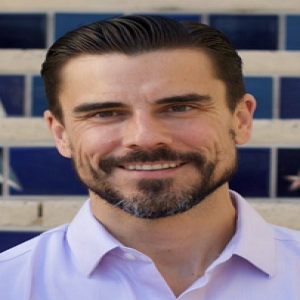
Thursday Dec 20, 2018
Christian Spletzer: Managing Expectations of Time to Hire Key Talent
Thursday Dec 20, 2018
Thursday Dec 20, 2018
After years of experience in the challenging world of executive search, Christian Spletzer founded Clockwork Recruiting to improve how search firms and their clients work together on retained search projects. He designed Clockwork to help recruiters demonstrate their consultative value to their clients at every stage of each project.
Prior to founding Clockwork, Christian worked as a recruiter and in operations at CT Partners, a Top 10 Global Executive Search firm. Previous to that, he worked within the Private Client Group of Merrill Lynch, and in an e-commerce start-up, 86.com, where he met his Clockwork co-founder, Jay Greene. Christian has a BA in Economics and a Juris Doctorate, and is a licensed attorney in NY, CT, and SC.
Today is all about Timing! Managing expectations for time and performance to make a key hire is more important than ever. The data is in and we are going to give you performance benchmarks of what your expectations should be.
Today’s Quote:
“If you are going to achieve excellence in big things, you develop the habit in little matters. Excellence is not an exception, it is a prevailing attitude.” - Colin Powell
Show highlights:
- The challenges and data to support today’s hiring challenges
- Measurement for performance and what a Great search looks like
Measuring your search performance
- Data from over 30,000 search projects
- Placement rate
- Days to Placement
- **Missing: Quality of Hire
- Key hires are taking an average of 123 days with a 71% placement rate on retained search
- People don't know how to pick a retained search firm. Most buyers of a retained search run off of bad data. No objective criteria to measure a search firm.
- Time matters- the longer it takes to get the seat filled, the shorter the ROI. Amazingly costly if a search fails.
- 22% failure rate
- Motivations may be wrong.
- The company is 50% of the equation in a successful outcome
Companies can go to:Benchmarks - Clockwork Recruiting
What good search looks like and how to choose the right partner
Detailed analysis
- Great- Average under 115 days and over 83% success rate
- Seniority
- Managers- lowest placement rate, 80+ days to place
- C-Level 130+ days, 78% placement rate
- Department
- Industry
- Region
- New York City - 60% success rate with longest days to hire
- Seniority
What to look for in a search firm
- Judge on time/success rate. Buy based on the experience and track record of success.
- Access to that information. Pick based on the one best suited for the search.
- Do not bet on the relationship only. Find the company with the track record- if you don't know where to look, you don't want to be sold. Getting more data before buying
- Track record
- Specialization in that particular department
- Inquire about Success rate/Stick rate: good hire vs. bad hire. Still around after a year, two years.
- Expectations: are very different than contingency search
- Meta data on actual projects. Who does it the best
- Hire the firm who brings value above and beyond just presenting candidates
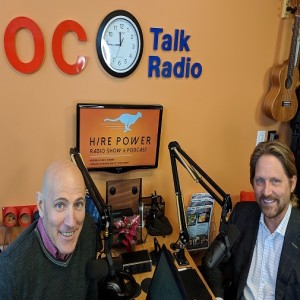
Thursday Dec 13, 2018
Charles Antis: Discovering Your Company's Purpose
Thursday Dec 13, 2018
Thursday Dec 13, 2018
It’s all about Purpose... Why? Because if your model exists just to make money, you won’t be relevant anymore. What is your companies purpose? Today we are going to help you discover your purpose and share ways to build purpose into to your hiring process.
Today’s Quote:
“When you're surrounded by people who share a passionate commitment around a common purpose, anything is possible.” - Howard Schultz
Show highlights:
- Discovering your purpose
- Getting others to rally around your company’s purpose (super power)
- How to hire Purpose-driven people
Let’s start by talking about how you discovered your companies purpose
- Origin Story:
- Reason to exist other than making money
- you have to have a Why
- “We exist to keep families safe and dry” - Antis purpose
Why is it important to have a purpose?
- The purpose of a company is to make money!
- Involved in changing people’s lives
- Benefits of Purpose
- Retention
- Increased productivity
Hiring with Purpose
- Have a reason why
- Getting others to buy in
- Knowing your “Why” and building it from the inside out.
- Helping employees discover their “Superpowers”
Tribal leadership- when the culture goes wrong. survival
Demonstrating that as a leader, you are there to serve them
Interviewing for Purpose
- Messaging
- Clear and consistent with how the leaders lead
- Interview
- Core values alignment
- Hire for alignment over skills
- Discovery of superpowers in the interview
Results
- 20% culture lift in a month- gift card that they can donate to a cause that is near and dear. To someone who did
- Retain 93%
- Melt away silos builds a stronger bond between individuals and departments
Charles Antis, Founder & CEO of Antis Roofing & Waterproofing is a well-respected and widely known roofing expert, entrepreneur and humanitarian. Charles began his career as a roofing professional in 1984. Since then, he has become one of the most trusted names in the Southern California roofing industry, as well as an inspirational business leader championing social corporate responsibility.
Charles has been the recipient of many prestigious awards over the years and was recently honored with the 2017 US Chamber of Commerce Foundation Corporate Citizen Award, Small and Mid-Size Business. In 2017, he was also named as National Philanthropy Day Honoree, Outstanding Corporation or Business, Mid-Size; the Civic 50 Orange County Honoree; and received the top honor with the CNA Insurance/National Roofing Contractors Association (CAN/NRCA) Community Involvement Award.

Thursday Dec 06, 2018
Brian Breth: Sourcing the Right Players Creates a Company of Legends
Thursday Dec 06, 2018
Thursday Dec 06, 2018
Sourcing! Knowing who to target is far more effective recruiting strategy than casting a wide net when it comes to hiring correctly for your company. Even without a recruiting team, business leaders must be sourcing to engage and hire the right talent.
Today’s Quote:
"Finding good players is easy. Getting them to play as a team is another story." - Casey Stengel
Show highlights:
- What is sourcing and why is it so important
- Sourcing strategies
- How to execute on your strategy!
What is sourcing?
Sourcing Definition according to SHRM
“Sourcing is the proactive searching for qualified job candidates for current or planned open positions; it is not the reactive function of reviewing resumes and applications sent to the company in response to a job posting or pre-screening candidates.
Sourcing is typically part of the recruiting function performed by the HR professional, but it may also be conducted by managers within the company. Sourcing can identify either candidate who are not actively looking for job opportunities (passive job seekers) or candidates who are actively searching for jobs (active job seekers).”
- Identifying your players
- Building your ShortList
- Collecting data needed to engage them
- Figuring out your Positioning
- Where is time best spent?
- Most important capital investment is your people. Good hires always provide ROI
Sourcing Strategies
- ATS (applicant tracking system) /Database …
- Job boards are recruiting databases
- Social Media
- Job Postings
- Misc. (recruiter networks, internal, alum networks)
- Referrals - Should be the place you start
Where does Sourcing fit into the recruiting process?
- Brian’s formula
- Kick off meeting- Identifying needs
- Sourcing -a place (ats, rolodex, spreadsheet)
- First Contact
- Rick’s Formula
- Understanding your core values
- Benching needs of the work to be done
- Sourcing - building contact collateral
How to Source (Small company sourcing/business leader sourcing)
*** Plan and develop the relationship before you need to hire the person.
Database/Referral Network first-
Best Methods for sourcing:
Under limited resources (self-recruiting)
- Identify competitors - Your Talent competitors
- Connect and network with everyone to become known and build brand awareness
- Give before you take
- Do your homework on the person, let them opt out then ask for referrals
Best tools for Sourcing
- Referrals - internal/external
- Linkedin, Twitter, Facebook, Instagram
- Sourcing Tools: Hiretual, Entello
- Resume Data Bases - Internal ATS, Angellist
- Archives
- Portfolios - Carbonmade, Github
- Creative sources
- Meetups
Here’s How I source
- Identification of Source companies
- Target list
- Define what to look for in potential people
- Contact directly outside of social platforms and augment with social connections
- Personal email, text messaging - Highest response rates
Engagement
-
- Marketing/Messaging aligned with company values
- Job Descriptions with clear performance metrics
- Application process…. RESPOND!
Brian Breth is a talent acquisition leader and US Marine Corps veteran with proven of experience forging, adapting, and applying best practices to complex business challenges in recruiting. He has a proven track record as an entrepreneurial leader whose ability to align teams, enact change, and build sustainable frameworks enables businesses to attract top talent and become more efficient, productive, and competitive. Brian currently leads recruiting for the Publishing and Esports teams at Riot Games.
Not only is (Brian etc) speaking at the ERE Recruiting Conference in April in San Diego but yours truly is too! Join both of us there.
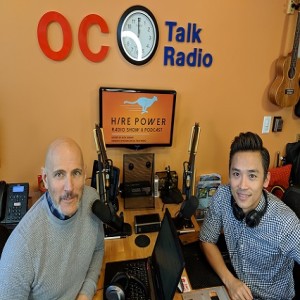
Friday Nov 30, 2018
Sang Huynh: Extreme Transparency, Tech Startup Style
Friday Nov 30, 2018
Friday Nov 30, 2018
The good and great results of full company transparency. There is a growing movement for full openness within companies which is pretty common in Tech startups. The more open you are, the more engaged your people become!
Today’s Quote:
“A lack of transparency results in distrust and a deep sense of insecurity.” - Dalai Lama
Show highlights:
- What is Transparency & Why it is important
- What works & what doesn't
- Transparency in the hiring process
Let’s start by talking about your experience at Tint
- How was the company transparent?
- Open door meetings
- Open Financials
- Employee compensation
- Group decision making
- Different levels of Transparency
- Extreme transparency
What works and what doesn't?
- Ownership
-
- Decision-making process
- Compensation Transparency
- Reduces distractions
- Open venting/surveying
- Open transparency to customers did not work so well
Process for transparency in the interview process
Structure for Transparency
Preparation for roll out
Engagement
- Job postings
- Personal awareness with an assessment to determine the data
- Contact - demonstrate transparency
- Managing expectations- positive experience… expect to hear from us by x date
Interview
- Interview process
- Discuss people challenges
- Product/company challenges
- Preparing the candidate,
- What happens when & time frame
- Lower the barrier of nervousness - must get them comfortable
Sang Huynh is a Mentor at Quake Capital Partners and former COO for TINT (tintup.com), A marketing tech startup in SF that recently exited. One of TINT’s guiding principles is to “cultivate transparency both internally and externally.” From open door meetings, exposed financials (including compensation) and group-based decision making. Prior to TINT, Sang was a VP in the Global Security Group at Bank of America Merrill Lynch which has the traditional corporate culture. He’s here to share his experience as a former leader at two organizations with polar opposite approach to culture.
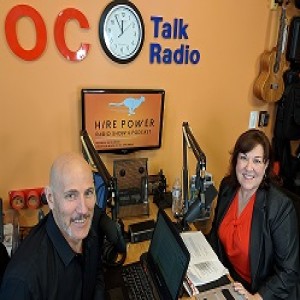
Friday Nov 23, 2018
Monica Lukoschek: The Immigration Mess!
Friday Nov 23, 2018
Friday Nov 23, 2018
The Immigration Mess ie: Immigration 10.142! Turning away great people due to immigration issues is just tragic.
Today’s Quote:
“The U.S. immigration laws are bad - really, really bad. I'd say treatment of immigrants is one of the greatest injustices done in our government's name.” - Bill Gates
Show highlights:
- The current immigration landscape
- Changes in policy for 2019
- Creative steps to navigate today’s immigration laws
Quick breakdown on the different types of Visa:
- Hirable visa categories
- E1, E2, - investor visa
- F 1 Visa- Student visa practical training
- H1B – Specialty Occupation (Cap vs. non-cap) 65,000, plus 20,000 for US masters/PhD last year 190,000 petitions filed. Highest in 2017 236,000 filed (historical: annual cap to 115,000 for Fiscal Year 1999; 115,000 in Fiscal Year 2000; and 107,500 in Fiscal Year 2001. The cap would return to 65,000 starting with Fiscal Year 2002.
- J-1 Visa- exchange visitor can work, receive training, study or do research
- L-1A/B- Intracompany Transferee (manager, executive, specialized knowledge)
- O-1 Extraordinary Ability in the arts, science or business.
- TN Visa- NAFTA
- R-1 Religious Worker
Immigration policy
April 18, 2017 Executive Order Buy American, Hire American – seeks to create higher wages and employment rates for U.S. workers and protect their economic interests
Allows for rule-making, policy memos and operational changes. Ensure H-1B visas go to only the highest skilled and highest paid.
- The H1 B Visa Changes
- Focus on wages is a Level I wage a specialty occupation?
- Challenging if a degree is necessary for the job… specific degree required? Can you prove alternative eligibility requirements?
- Computer Programmer Analyst – March 30, 2017 Rescinded 2000 memo. Now stating that Bachelor’s not required for job. What other computer-related occupations could this extend to?
- Third party worksite/direct employer/employee relationship. i.e., even accountants at an accounting firm. February 22, 2018 policy memo supersedes prior memo
- Rescission of guidance allowing USCIS to defer to prior
- *Change in the information required for approval
- Policy changing almost daily and hurts smaller companies most
Just last week, the DHS and the DOL proposed new regulations:
- Electronic Registration for Cap subject petitioners by next April. Initially Proposed in 2011
- Only open two weeks?
- Multiple registrations?
- Elimination of work permits for spouses of H-1B workers waiting more than 6 years for green card (taking more than 10 years for certain countries)
- Hiring challenge- Foreign workers need H-1Bs
Missing out on A-players
What we need to do to navigate this mine field:
- Consult your attorney before investing too much time
- What to ask? What to look for?
- Does the position require a degree and does the applicant have the specific degree?
- Will the employer be required to seek a work visa? H-1B employers required to pay for attorney’s fees and filing fees. Can employer wait until October 1 (or beyond) for the employee to begin working?
- If transferring from a previous H-1B – how many years on H-1B, do they have an approved immigrant petition (could extend time beyond 6 years). Premium Processing suspended until at least February. Will employee risk transfer?
- Will the employment be “off-site”? Must show proof of right to control the employee and cannot “bench” Can you provide SOWs, itinerary, etc. See itinerary requirements.
- Creative solutions to still be able to hire the person your company needs!
- Is the applicant from Chile, Singapore, Northern Mariana Islands, Canada, Mexico, Australia? May be other alternatives.
- Is spouse on a visa category which extends work authorization to employee? (E-3, L-1, etc.)
- STEM OPT extension to 36 months.
- 3rd party firms as a protective layer?
- Offshore options - Canada or Mexico?
- Work remote
As a founding partner at U.S. Immigration Law Group, LLP, Monica Lukoschek’s practice focuses on employment-based immigration law, assisting businesses in hiring and retaining foreign personnel and managing their immigration compliance programs, assisting entrepreneurs and investors in the United States, and providing advice to employers and employees with all aspects of immigration law compliance.
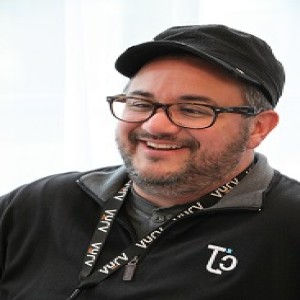
Thursday Nov 15, 2018
Thursday Nov 15, 2018
In today’s hiring market, People have options, know they are in the driver's seat. It is really not entirely your choice anymore! Here’s the kicker, People are totally willing to walk away from your opportunity if you can not effectively communicate value above and beyond a paycheck. “What’s in it for Them”.
Today’s Quote:
Your pain is the breaking of the shell that encloses your understanding.
- Khalil Gibran
Show Highlights:
- Why, in today’s market, people are willing to drop your company in a heartbeat
- What to do to stop the madness
- Provide a framework
What is it that people want?
- They don't want to be sold!
- want to know what’s in it for me?
- How are you going to make me better, train me or develop me?
- How are you going to recognize me?
- Understand their needs & desires
- People with options know they have options
- If we don't answer the question correctly, they move on
- Unearthing motivation for change.
- Experiential learning.
- Listen
- Emotional engagement
- Heal their pain
- Fulfill their desire
- Provide growth
- Three Truths:
- Nobody cares about you, your problems or your company
- You are just adding to the noise- Good people are busy
- Adapt or Perish
- What to stop
- Making the conversation all about you.
- Hiring Managers & Recruiters want the easy work.
Structure to attract rather than repel:
-
- Personalized toward the candidate
- Preparation of the questions asked
- Think through the solution for each individual person
- Fitability- don't push the wrong candidate into the wrong role
- Pacing
- Fast but still check off all the boxes,
- Pacing according to the candidate. Let the candidate drive the search. Be adaptive, meet them where they are.
- Recognize how they want to be recruited
- Make it about the person
- Positioning
- Give before you take
- Gain understanding of the person first
- Understand their career wound
- Stop thinking - “how can I close this person”
- Let the person close you
- Play devil’s advocate
- Connect the Dots!
- People will tell you “Why” they want to join your company
William Tincup is the President of RecruitingDaily.com. At the intersection of HR and technology, William is a sought after Writer, Speaker, Advisor, Consultant, Investor, Storyteller & Teacher. He's been writing about HR related issues for over a decade. William serves on the Board of Advisors / Board of Directors for 20 HR technology startups.

Thursday Nov 08, 2018
Lindon Crow: The Anatomy of a Recruiting Call. Stop Triggering Fight or Flight!
Thursday Nov 08, 2018
Thursday Nov 08, 2018
The Anatomy of a Recruiting Call. People do not respond to you because you are sending the wrong message! What do You Say that is Triggering a person’s Fight or Flight Response?
Today’s Quote:
“Human behavior flows from three main sources: desire, emotion, and knowledge”. - Plato
Show highlights:
- What happens in the brain when someone is trying to recruit you
- What Triggers Fight or Flight response
- Techniques to approach the conversation to avoid triggering negative responses
I call you to recruit you for a new job.
- What happens in the brain
- What is naturally desired by people - intrinsic desire
- What choices or options mean to a mind. What too many/too few options means
- What motivates people - primal instinct, reptilian brain
- Tune out to the sales pitch
- How do I get rid of this person?
What triggers Fight or Flight response?
- Recruiting is disruptive to the brain. It breaks safety
- Create environment of loving, self esteem, self actualization
The Conversation
- Creating a process that creates a sense of Familiarity & Achievement
- Authority (achievement) Daniel pink's Drive
- $ is a motivator up until $70k
- Positioning:
- Purpose of the call is to get to the Truth
- It’s not about you!
- Listening:
- Stop Fishing
- People are busy and don't care about what you are selling
- “What's happening in your current role…”
- Test the waters - Question the timing & the Why
- Lead the Path:
- What problem needs to be solved?
- How they desire it to be fixed?
- Wound, Desire, Achievement - like Plato’s emotion, desire, knowledge
- Celebrate their wins
Lindon Crow is the President of Productive Learning. As a workshop facilitator and trainer, he has helped more than 2,500 clients achieve higher levels of emotional awareness, self-mastery, and personal fulfillment. Lindon is known for his provocative, straightforward, and compassionate communication style and his keen ability to forecast potential outcomes. This helps his clients make better educated decisions about their current directions and opportunities for growth.
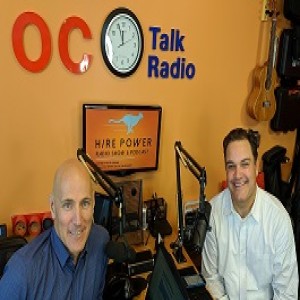
Thursday Nov 01, 2018
Brenan German: Can AI be the Solution to a Bad Interviewing Experience?
Thursday Nov 01, 2018
Thursday Nov 01, 2018
Did you know that according to LinkedIn “83% of talent say a negative interview experience can change their mind about a role or company they once liked, while 87% of talent say a positive interview experience can change their mind about a role or company they once doubted.” Candidate Experience Matters!
Today's Quote:
“The only source of knowledge is experience.” - Albert Einstein
Show highlights:
- The impact of candidate experience on your ability to hire
- AI
- Our solution to create a positive candidate experience
What is candidate experience? Why is it important:
-
- Job descriptions
- Application process
- Interview Experience
- Feedback/Closing the Loop
- Nearly 60% of Job Seekers Have Had a Poor Candidate Experience & 72% Talk About It (GlassDoor)
The VALUE of AI:
- AI- Recruitment Automation
-
- Sourcing 58%
- Screening 56%
- Nurturing 55%
- Scheduling 42%
- Engagement 24%
- Interviewing 6%
- AI will eliminate the transactional pieces of recruiting but it won't solve the most critical portions….Engagement, Interviewing
Let’s lay out our structure for creating an impressive candidate experience:
Engagement:
-
- Marketing/Messaging aligned with company values
- Job Descriptions with clear performance metrics
- Application process…. RESPOND!
Interview:
-
- Set Expectations
- Structure (Organized, Timed, real time feedback)
- Pre-determined questions
- Give & Receive Feedback
Closure:
- Professionally release each person from the process
-
- Do Not Ghost
- Listen to your bad glassdoor reviews
Brenan German is Founder and President at Bright Talent Resources, Inc., Which is a boutique Human Resources Advisory, Project Management, Training, and Recruiting Services firm..
Brenan’s particular expertise involves the alignment of talent management strategies to business goals, and the implementation of systems and processes to reach measurable objectives, demonstrating clearly the bottom line impact expected of strategic Human Resources programs.

Thursday Oct 25, 2018
Sherry Benjamins: Build a Strategic Plan to Avoid Costly Hiring Mistakes
Thursday Oct 25, 2018
Thursday Oct 25, 2018
Do you and your company have a strategic hiring plan? If you are like most companies, you don’t. Today we are going to help shift your model from a reactive to a proactive hiring model and change your world!
Today's Quote:
“Everyone chooses how to approach life. If you're proactive, you focus on preparing. If you're reactive, you end up focusing on repairing.”
― John C. Maxwell
Show highlights:
- Why you hire poorly
- A structure to build a strategic hiring plan
The problems with a reactive hiring process (why you can't hire):
-
- Transactional
- Paying too much for people
- Not solving a problem
- Your company is just a paycheck
- High failure rate
- 67% of people earning $100K+ plan to make a job change in the next 12 months.
- Companies in React mode all the time
- Forecasting recruiting like you forecast your finances
Creating a Strategic Plan for Talent
Five elements you must have to develop a solid strategic plan:
- 1) Define your value agenda –
- what is the source of value in your business? Is it in operations
- How you structure the teams,
- Where the highest value resources are in the organization?
- How are you dealing with automation, big data, AI, innovation, customer satisfaction.
- 2) What is your leadership agenda?
- Do you have the right people in the highest impact roles
- 3) Strategic priorities –
- what is the hottest priority for success given where the value will be most critical?
- Does the leadership team agree on these?
- 4) A Winning culture – with this focus, is everyone ready and believing and behaving in what it takes to win?
- Energy required – where is the energy and if there are “vampires” sucking the energy from the team, truly evaluate the pay off or drain
- 5) Road map
- Specific & Actionable… Need to get some early wins
- Send a message to the organization
- Accountability & results
Ricks Input:
- Know who you are- Company values
- Break down the work that needs to be accomplished & timeline
- Establish Performance metrics 90/180 day
- Establish Interviewing strategy and process
- -Closing the hiring managers and candidates for mutual success
Sherry Benjamins has over 25 years of experience in business management, HR, consulting services and helping companies solve for their talent challenges. Her expertise is helping clients shift from the old model of reacting to talent needs to starting a new conversation that is forward looking and focused on adding value to their business.
Sherry is the President of S.Benjamins & Company. Her company does three things; they find management talent for their clients, they help clients create a strategic talent plan and lastly, she brings talent together in quarterly executive learning sessions. Her experience includes work in the HR corporate world, P&L leadership of a regional career services firm, and founder of her own firm for the past 21 years. She has an MBA from Pepperdine and speaks frequently to new MBA graduates about the world of work today.
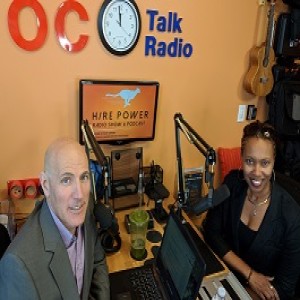
Thursday Oct 18, 2018
Nicole Washington: You Closed Your First Round of Funding, Now What?
Thursday Oct 18, 2018
Thursday Oct 18, 2018
Congratulations! You closed your first round of funding, what's next? To scale, you better have a plan, a structure and commitments for who’s on board.
Today's Quote:
“If you're trying to create a company, it's like baking a cake. You have to have all the ingredients in the right proportion.”
- Elon Musk
Show highlights:
- The importance of having a structured plan
- Stick to the plan
- Layout structural elements
Stick to the defined plan!
- Cause, Mission, Vision
- Should have an active pipeline ready to go
- Key positions in place, partners, hr strategy in place
- Hiring without compromise- values and mission driven alignment
- Investors should have dig into core company values and compromise levels of hiring
- Just a bunch of people winging it… you won't be able to hire right in today’s landscape
Create a team that investors will continue to invest in
- No, no’s
- Knowing the difficulty creating a team
- Hard for people to find a good technical people
- Don't hang out in the same places
- Setting Expectations & writing them down
- What happens when it doesn't work?
Structure… Have everything lined up!
- Company values in cement
- Define your Road map
- Set the stage for what happens next
- All documents & agreements in place
- Getting people to join before you have funding or a product
- Leverage university talent, students, - easier to get people to resonate with them
- Students: finding the ones who are doing research in your particular field
- Develop the relationship with the professors
- Reach out directly to the student *attractive to investors
Takeaways:
- Do not make compromises!
- Goals of the company first
- Hire with the end result in mind
Nicole Washington, Director of Innovation and Growth of OCTANe OC, focuses on engaging with strategic partners to accelerate the growth of early to later stage ventures and small to medium size business throughout the entire Southern California Ecosystem.
She currently serves as Chair of the Academic Committee and Trustee of the Board of Education for Samueli Academy. A (STEM) high school that delivers state of the art education to a large population of underrepresented youth.
Nicole is a member of the Ohio TechAngel Fund, the 2nd largest Angel Investor Network in the United States, where she served as the due diligence team, technology lead for several years.
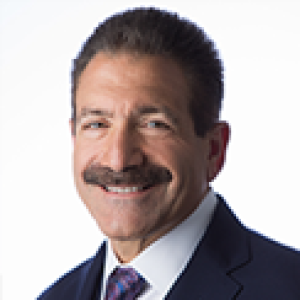
Thursday Oct 11, 2018
Rocky Romanella: Define and Build Your Core Company Values
Thursday Oct 11, 2018
Thursday Oct 11, 2018
Define and build your core company values. Companies with clearly defined values & purpose consistently outperform their competitors by as much as 10x. Today’s episode is focused on helping you define who you are.
Today's Quote:
"Effectiveness without values is a tool without a purpose." - Edward de Bono (1933 - ), Author and Inventor
Show Guest:
Rocky Romanella is currently the Founder and CEO of 3SIXTY Management Services, LLC, a management consulting firm specializing in Executive Speaking, Leadership Development, and Consulting Services.
Rocky is an experienced CEO who led one of the largest rebranding initiatives in franchising history – The UPS Store, revolutionizing the $9 billion retail shipping and business services market. He steered UPS’s entry into the healthcare industry and created the mantra, “It’s a patient, not a package. ®”
He also led the integration of more than 20 acquisitions to improve financial performance, capabilities and global network footprint. Rocky has the rare ability to see a clear vision of the changing business landscape, the passion to develop strategies, tactics and metrics to drive desired results. He is the Author of Tighten the Lug Nuts: the Principles of Balanced Leadership(Amazon.com).
Episode highlights:
- Who you are?
- Defining your company values
- How to align your hiring with your values
“Without a strong set of values, the best leadership strategy can go awry. With a good value structure in place, the worst leadership approach can right itself and eventually lead to the desired outcome.” - Rocky Romanella
Why is this Important?
- People desire a sense of purpose to really thrive
- Core values are the Foundation for defining your Mission & Purpose
- Attrition issues/bad hires
- *small business don't believe they need to have values well defined... Wrong!
How do you define who you are?
- Start with your personal brand
- “Your true character is defined by your honesty of purpose”
- Ask peers
- Company Survey
- What won't I compromise
Step by step of how to define and build your core company values:
Rick’s process:
- Start with Personal values first
- KPI driven VS. People driven
- Established Leadership Team
- Define everyone’s core values and build from there.
- Prioritize top values
- Own your Values!
- Understand your values? You must:
- Articulate clearly in writing.
- Test your values through daily decision-making.
- Rocky’s Structure:
- Mission
- Vision
- Strategy
- Roadmap
How to transfer your values into your hiring:
- Values Alignment
- Values drive hiring
- Behavioral interview process
- Assessments: Disc, Predictive Learning
- Don’t compromise on hiring!
